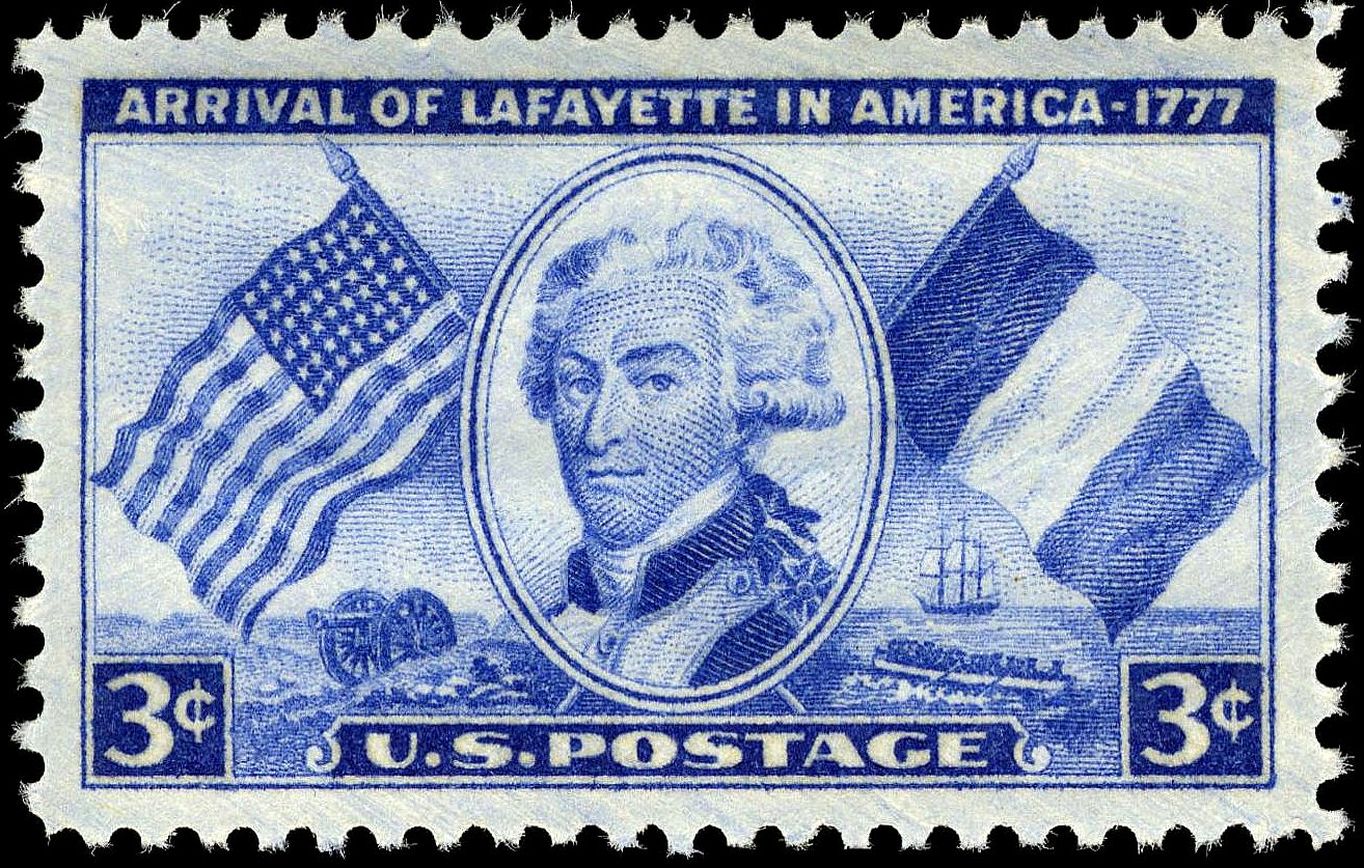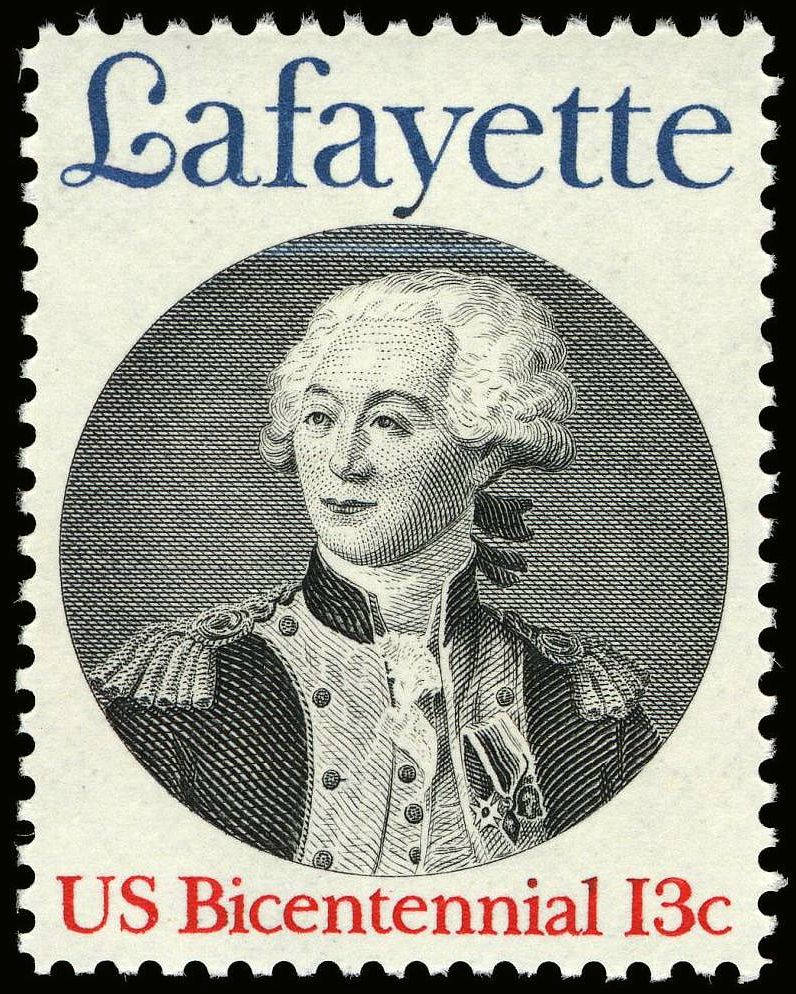1. Early Life and Beginning of Military Service
Gilbert du Motier, Marquis de La Fayette, was born into an ancient and distinguished noble family with a long history of military service, shaping his early life and setting the stage for his future career.
1.1. Family Background and Childhood
Lafayette was born Marie-Joseph Paul Yves Roch Gilbert du Motier on 6 September 1757, at the Château de Chavaniac in Chavaniac, near Le Puy-en-Velay, in the province of Auvergne (now Haute-Loire). His father was Michel Louis Christophe Roch Gilbert Paulette du Motier, Marquis de La Fayette, a colonel of grenadiers, and his mother was Marie Louise Jolie de La Rivière. The Lafayette family's lineage was considered one of the oldest and most prominent in Auvergne, known for its tradition of courage and chivalry, and a notable disregard for danger. An early ancestor, Gilbert de Lafayette III, a Marshal of France, fought alongside Joan of Arc during the Siege of Orléans in 1429. Legend also attributes an ancestor with acquiring the crown of thorns during the Sixth Crusade.
On his maternal side, his great-grandfather, the Comte de La Rivière, commanded the King's personal horse guard, the "Black Musketeers" (Mousquetaires du RoiFrench), until his death in 1770. Lafayette's paternal uncle, Jacques-Roch, died fighting Austrians in Milan during the War of the Polish Succession on 18 January 1734, passing the marquess title to Michel. Lafayette's father also died on the battlefield on 1 August 1759, struck by a cannonball while fighting an Anglo-German army at the Battle of Minden in Westphalia. Upon his father's death, Lafayette inherited the title of marquis and Lord of Chavaniac, though the estate passed to his mother. Devastated by her husband's loss, his mother moved to Paris with her father and grandfather, leaving Lafayette to be raised in Chavaniac by his paternal grandmother, Mme de Chavaniac, who had brought the château into the family as part of her dowry.
In 1768, at the age of 11, Lafayette was called to Paris to live with his mother and great-grandfather at the comte's apartments in Luxembourg Palace.
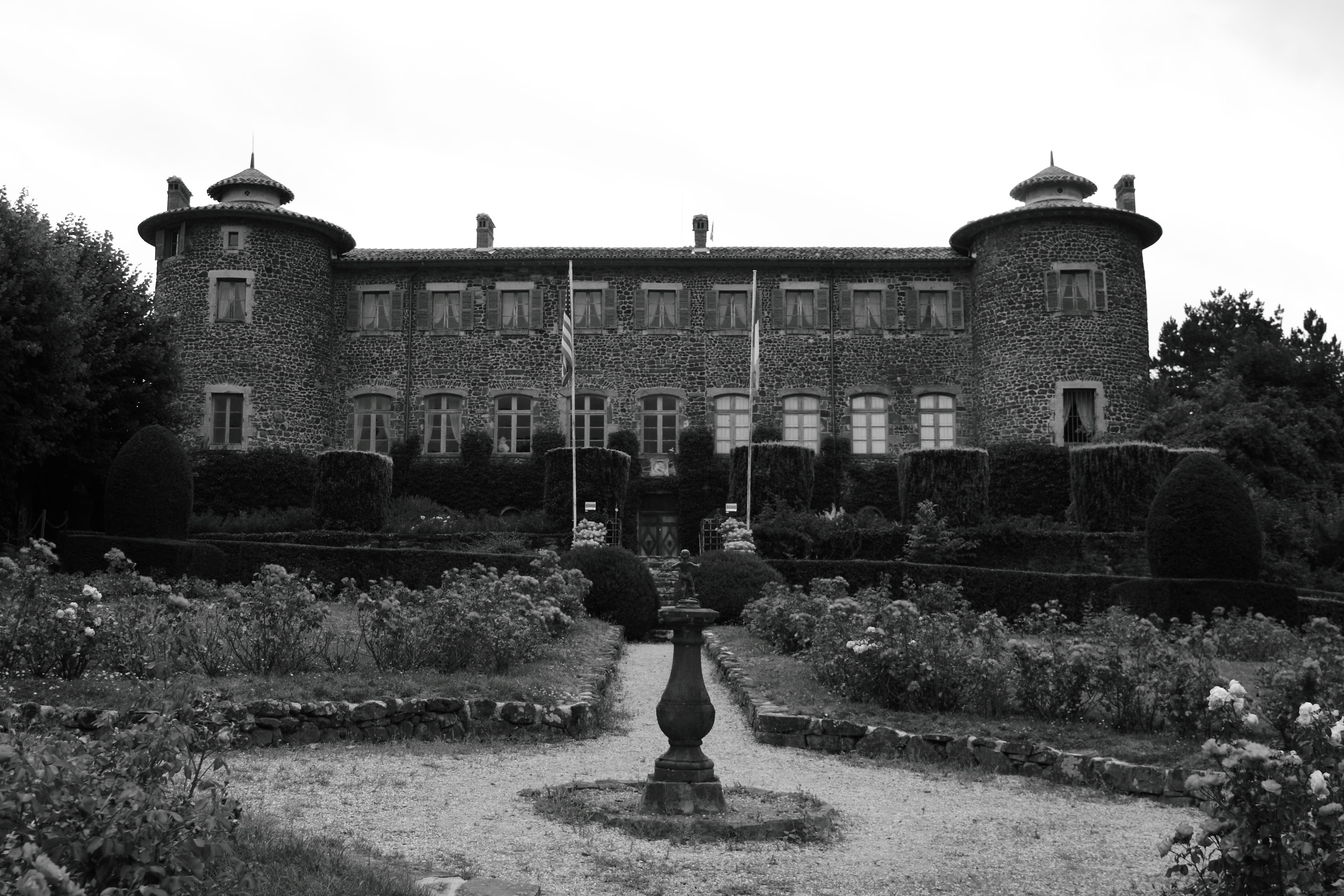
1.2. Early Education and Military Career
Lafayette was enrolled at the Collège du Plessis, part of the University of Paris, where it was decided he would continue the family's military tradition. His great-grandfather, the comte, enrolled him in a program designed to train future Musketeers. On 3 and 24 April 1770, Lafayette's mother and grandfather died, respectively, leaving him an income of 25.00 K livres. Following the death of an uncle, the 12-year-old Lafayette inherited a substantial yearly income of 120.00 K livres. This inheritance made him a major landholder with estates in Brittany, Auvergne, and Touraine.
In May 1771, at less than 14 years old, Lafayette was commissioned an officer in the Musketeers with the rank of sous-lieutenant. His duties, primarily ceremonial such as marching in military parades and presenting himself to King Louis XV, allowed him to continue his studies. At this time, Jean-Paul-François de Noailles, Duc d'Ayen, sought to marry off his daughters. The 14-year-old Lafayette seemed a suitable match for his 12-year-old daughter, Adrienne de La Fayette. Despite initial opposition from the duke's wife, Henriette Anne Louise d'Aguesseau, who felt the couple was too young, they agreed to defer marriage discussions for two years, allowing the two to meet casually. The arrangement proved successful; they fell in love and were happily married in 1774, remaining so until Adrienne's death in 1807.
After their marriage contract was signed in 1773, Lafayette lived with his wife at his father-in-law's house in Versailles. He continued his education at the riding school of Versailles, where the future Charles X was among his peers, and at the prestigious Académie de Versailles. In April 1773, at the request of his father-in-law, Lafayette was commissioned a lieutenant in the Noailles Dragoons. Though he and his wife attended the Queen's balls weekly, Lafayette's poor dancing skills and low tolerance for alcohol made it difficult for him to navigate court life.
In 1775, Lafayette participated in his unit's annual training in Metz, where he met Charles François de Broglie, Marquis of Ruffec, commander of the Army of the East. During a dinner, they discussed the ongoing revolt against British rule in the Thirteen Colonies. Historians suggest that Lafayette, who held a deep resentment towards the British for his father's death, believed an American victory would diminish Britain's international standing. Having recently become a Freemason, news of the revolt ignited his chivalric and Masonic imagination with descriptions of Americans as "people fighting for liberty." Another account recalls Lafayette attending a dinner with the Duke of Gloucester (brother of British King George III), who criticized the Americans' objections to British rule and mocked their beliefs in equality and self-governance. Lafayette later cited this dinner as a turning point, especially when he learned that Washington was seeking recruits for the Continental Army.
2. Motivation for Joining the American Revolution
Lafayette's decision to join the American Revolution was driven by a profound belief in the cause of liberty and a desire for glory, leading him to defy his government and embark on a perilous journey across the Atlantic.
2.1. Encounter with the Cause of American Independence
In September 1775, upon turning 18, Lafayette returned to Paris and received the captaincy in the Dragoons promised as a wedding gift. In December, his first child, Henriette, was born. During these months, Lafayette became convinced that the American Revolution aligned with his personal beliefs, stating, "My heart was dedicated."
The year 1776 saw delicate negotiations between American agents, including Silas Deane, and King Louis XVI and his foreign minister, Comte Charles de Vergennes. The French monarchy hoped that by supplying the Americans with arms and officers, they could restore French influence in North America and exact revenge against Britain for France's defeat in the Seven Years' War. When Lafayette learned that French officers were being dispatched to America, he insisted on being among them. He met Deane and, despite his youth, secured inclusion. On 7 December 1776, Deane enlisted Lafayette as a major general in the American service.
However, the plan to send French officers and other aid to America was jeopardized when the British discovered it and threatened war. Lafayette's father-in-law, de Noailles, reprimanded the young man and instructed him to visit the Marquis de Noailles, the French ambassador to Britain and Lafayette's uncle by marriage, in London. Lafayette complied in February 1777 but did not abandon his plans for America. He was presented to King George III and spent three weeks in London. Upon his return to France, he went into hiding from his father-in-law (who was also his superior officer), writing to him of his intention to travel to America. De Noailles was enraged and persuaded Louis XVI to issue a decree forbidding French officers from serving in America, specifically naming Lafayette. It is possible that Vergennes even convinced the king to order Lafayette's arrest, though this remains uncertain.
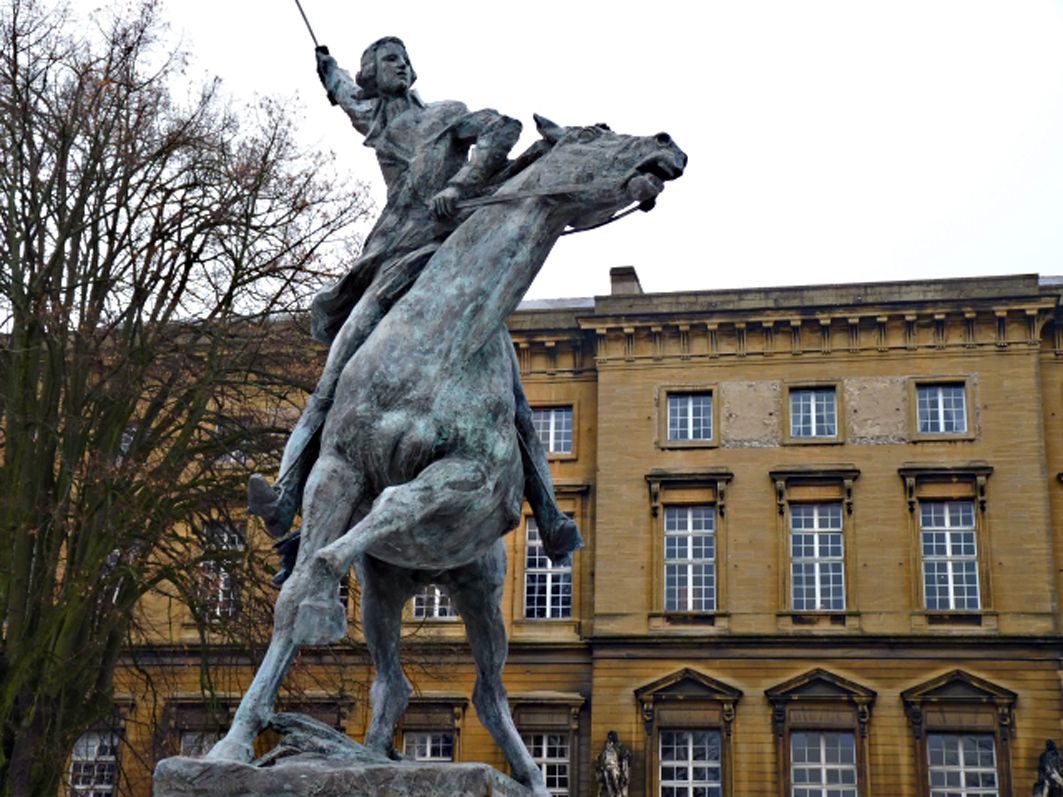
2.2. Departure from France and Voyage to America
Lafayette discovered that the Continental Congress lacked the funds for his voyage, so he personally purchased the sailing ship Victoire for 112.00 K livres. He traveled to Bordeaux, where Victoire was being prepared, and sent word requesting information on his family's reaction. The response, including letters from his wife and other relatives, threw him into emotional turmoil. Soon after departure, he ordered the ship turned around and returned to Bordeaux, much to the frustration of the officers accompanying him. The army commander there ordered Lafayette to report to his father-in-law's regiment in Marseille. Marquis de Broglie, who hoped to become a military and political leader in America, met Lafayette in Bordeaux and convinced him that the government secretly desired his departure. This was not true, though there was significant public support for Lafayette in Paris, where the American cause was popular. Lafayette, eager to believe this, feigned compliance with the order to report to Marseille, traveling only a few kilometers east before turning back and rejoining his ship.
Victoire set sail from Pauillac on the shores of the Gironde on 25 March 1777. However, Lafayette was not initially on board to avoid detection by British spies or the French Crown; the vessel moored in Pasaia on the Basque coast and was supplied with 5,000 rifles and ammunition from factories in Gipuzkoa. He then joined the Victoire, departing for America on 26 April 1777. The two-month journey to the New World was characterized by seasickness and boredom. The ship's captain, Lebourcier, intended to stop in the West Indies to sell cargo, but Lafayette, fearful of arrest, purchased the cargo to avoid docking at the islands. He landed on North Island near Georgetown, South Carolina on 13 June 1777.
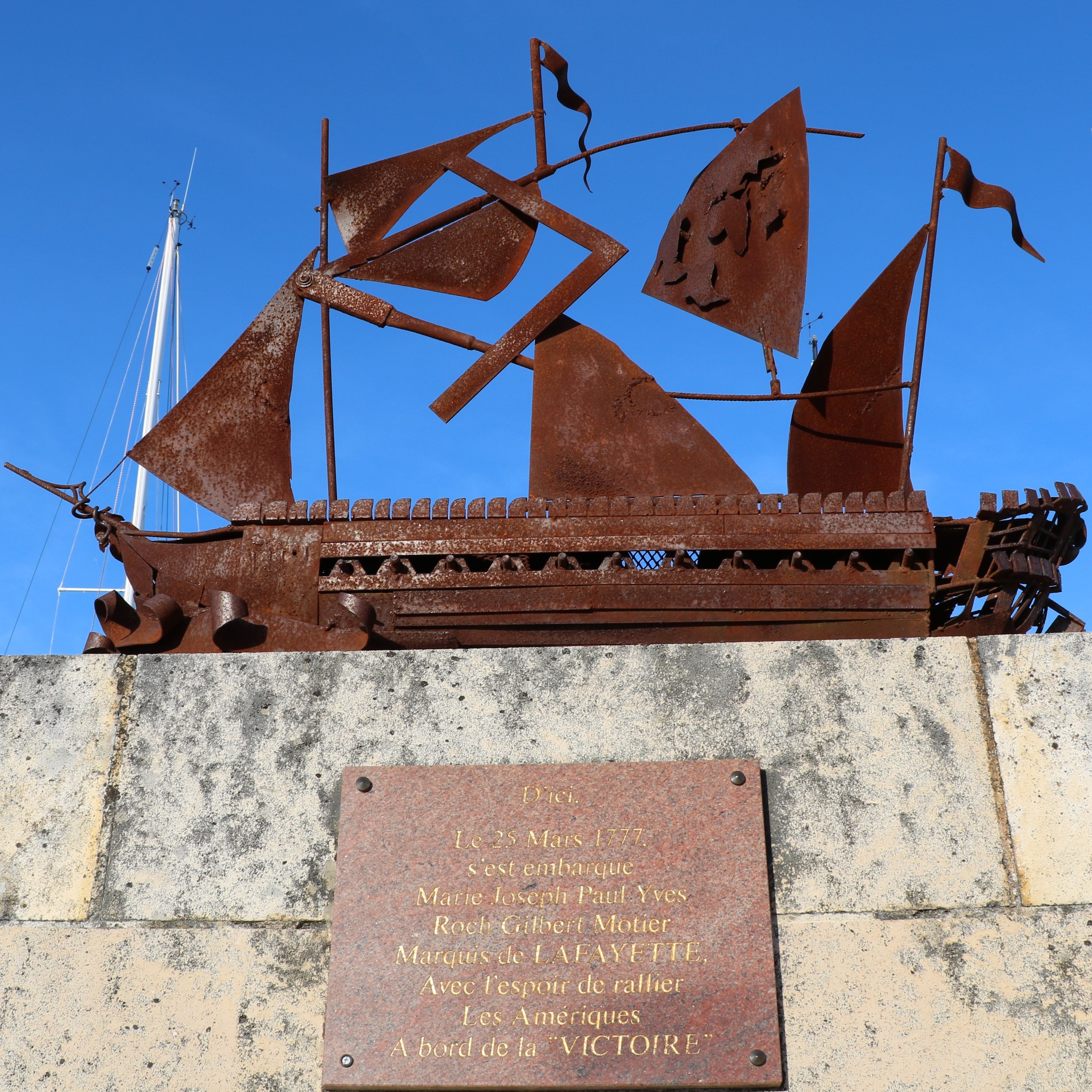
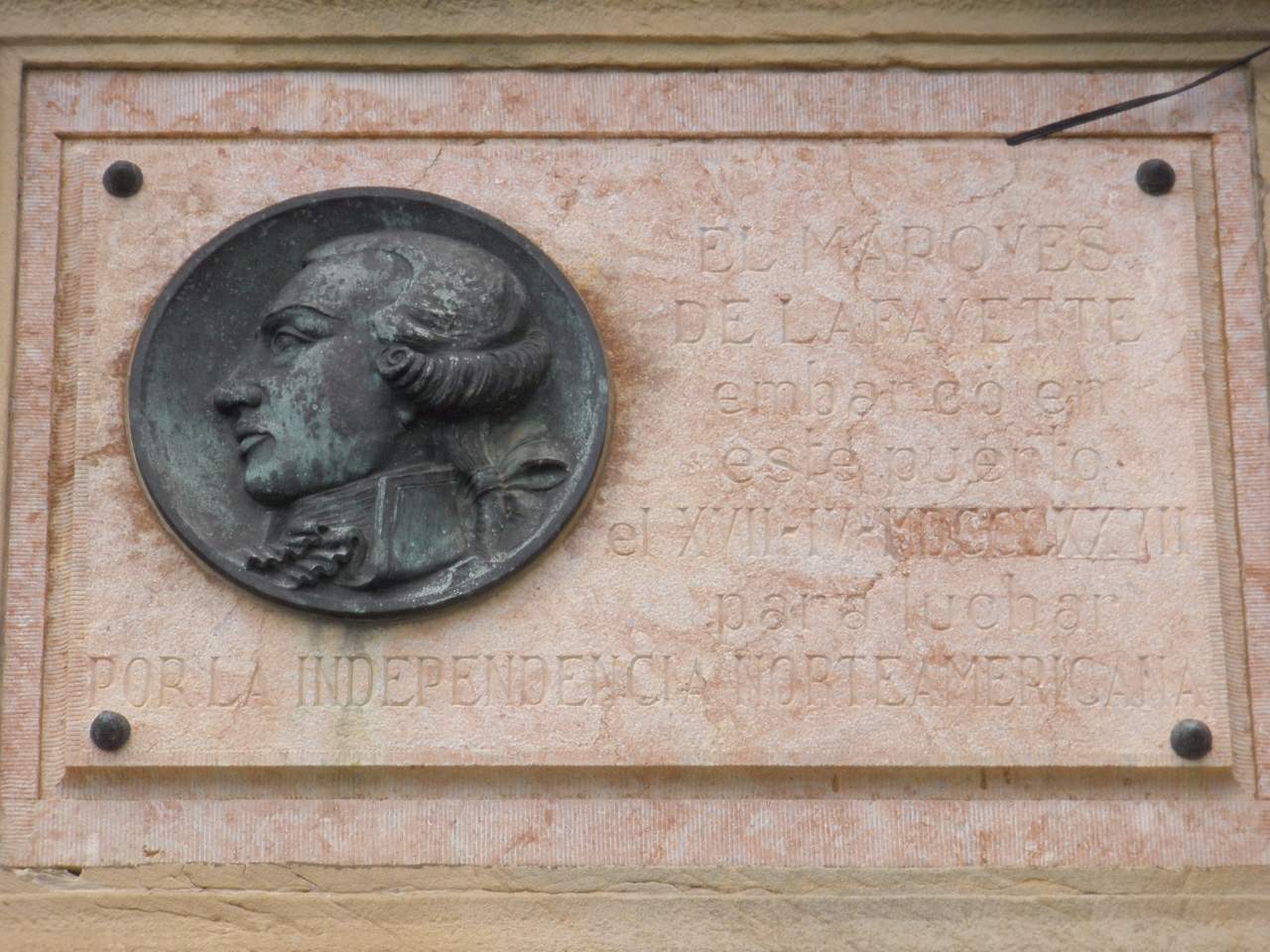
3. Contributions to the American Revolutionary War
Lafayette's involvement in the American Revolutionary War was marked by his unwavering commitment, strategic leadership, and developing bond with General George Washington, culminating in decisive contributions to American independence.
3.1. First Battle and Relationship with Washington
Upon his arrival in America, Lafayette first met Major Benjamin Huger, a wealthy landowner, and stayed with him for two weeks before departing for the revolutionary capital of Philadelphia. The Second Continental Congress, convening in Philadelphia, had been overwhelmed by French officers recruited by Deane, many of whom could not speak English or lacked military experience. Lafayette, who had learned some English en route and became fluent within a year of his arrival, and whose Masonic membership opened many doors in Philadelphia, offered to serve without pay. In recognition of his enthusiasm and noble background, Congress commissioned him a major general on 31 July 1777. His advocates included Benjamin Franklin, the recently arrived American envoy to France, who urged Congress by letter to accommodate the young Frenchman, also noting that Lafayette possessed substantial inherited wealth. Despite not being given a command initially, Lafayette considered himself a full-fledged commander.
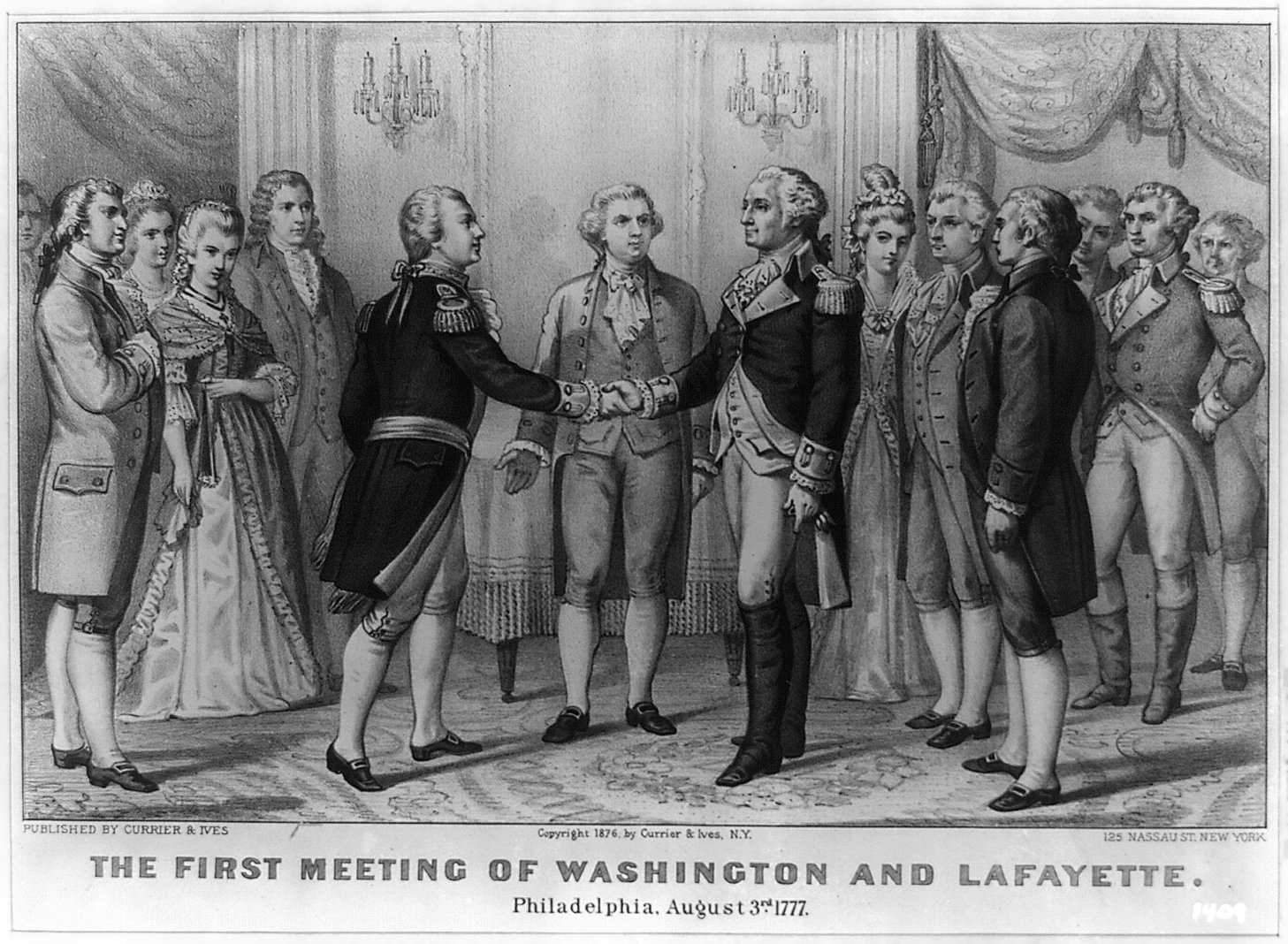
General George Washington, commander-in-chief of the Continental Army, came to Philadelphia to brief Congress on military affairs. Lafayette met him at a dinner on 5 August 1777, and according to historians, "the two men bonded almost immediately." Washington was impressed by Lafayette's enthusiasm and held a positive view of a fellow Mason. Lafayette, in turn, was awestruck by the commanding general. Washington took the Frenchman to view his military camp; when Washington expressed embarrassment at its state and that of the troops, Lafayette famously responded, "I am here to learn, not to teach." He became a member of Washington's staff, though confusion existed regarding his status. Congress regarded his commission as honorary, while he considered himself a full-fledged commander who would be given control of a division when Washington deemed him prepared. Washington told Lafayette that a division would not be possible due to his foreign birth but assured him he would be happy to hold him in confidence as "friend and father." Lafayette found in Washington the ideal father figure he had lost early in life.
Lafayette first saw combat at the Battle of Brandywine near Chadds Ford, Pennsylvania, on 11 September 1777. British commander Sir William Howe planned to occupy Philadelphia by moving troops south by ship to Chesapeake Bay rather than approaching the heavily defended city through the Delaware Bay, then marching overland. After the British outflanked the Americans, Washington sent Lafayette to join General John Sullivan. Upon his arrival, Lafayette joined the Third Pennsylvania Brigade, under Brigadier Thomas Conway, attempting to rally the unit to face the attack. British and Hessian troops continued to advance with their superior numbers, and Lafayette was shot in the leg. During the American retreat, Lafayette, despite his wound, rallied the troops, allowing a more orderly pullback before receiving treatment. After the battle, Washington cited him for "bravery and military ardour" and, in a letter to Congress (which was hastily evacuating as the British occupied Philadelphia later that month), recommended him for command of a division.
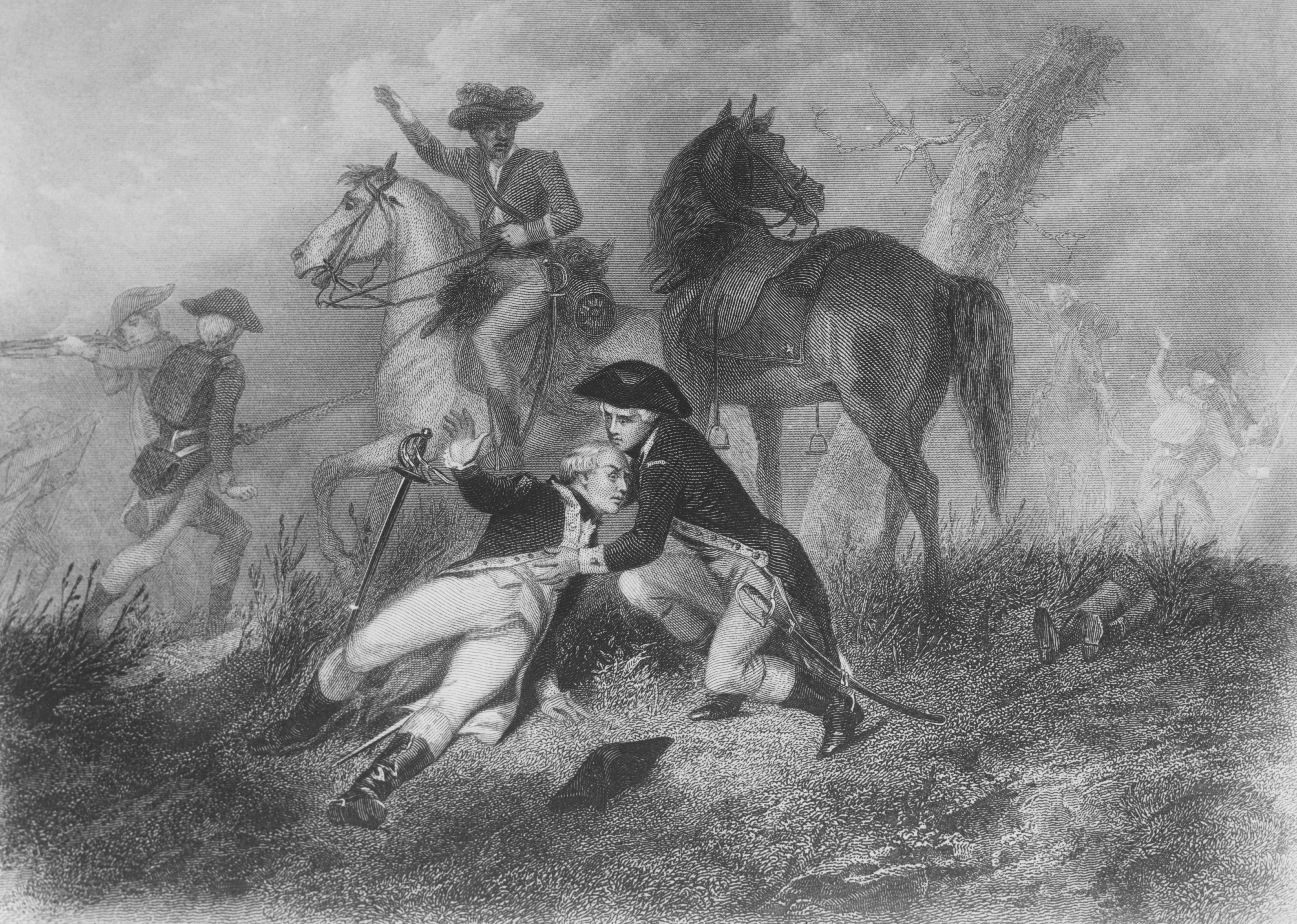
Lafayette returned to the field in November after two months of recuperation in the Moravian settlement of Bethlehem, and received command of the division previously led by Major General Adam Stephen. He assisted General Nathanael Greene in reconnaissance of British positions in New Jersey; with 300 soldiers, he defeated a numerically superior Hessian force in Gloucester, on 24 November 1777.
Lafayette stayed at Washington's encampment at Valley Forge in the winter of 1777-1778, sharing the hardship of his troops. There, the Board of War, led by Horatio Gates, asked Lafayette to prepare an invasion of Quebec from Albany, New York. This was part of the "Conway Cabal," an attempt by Conway and Gates to undermine Washington's leadership. When Lafayette arrived in Albany, he found too few men to mount an invasion. He wrote to Washington about the situation and made plans to return to Valley Forge. Before departing, he recruited the Oneida tribe to the American side. The Oneida referred to Lafayette as Kayewla (fearsome horseman). In Valley Forge, he criticized the board's decision to attempt an invasion of Quebec in winter. The Continental Congress agreed, and Gates left the board. Meanwhile, treaties signed by America and France were made public in March 1778, and France formally recognized American independence.
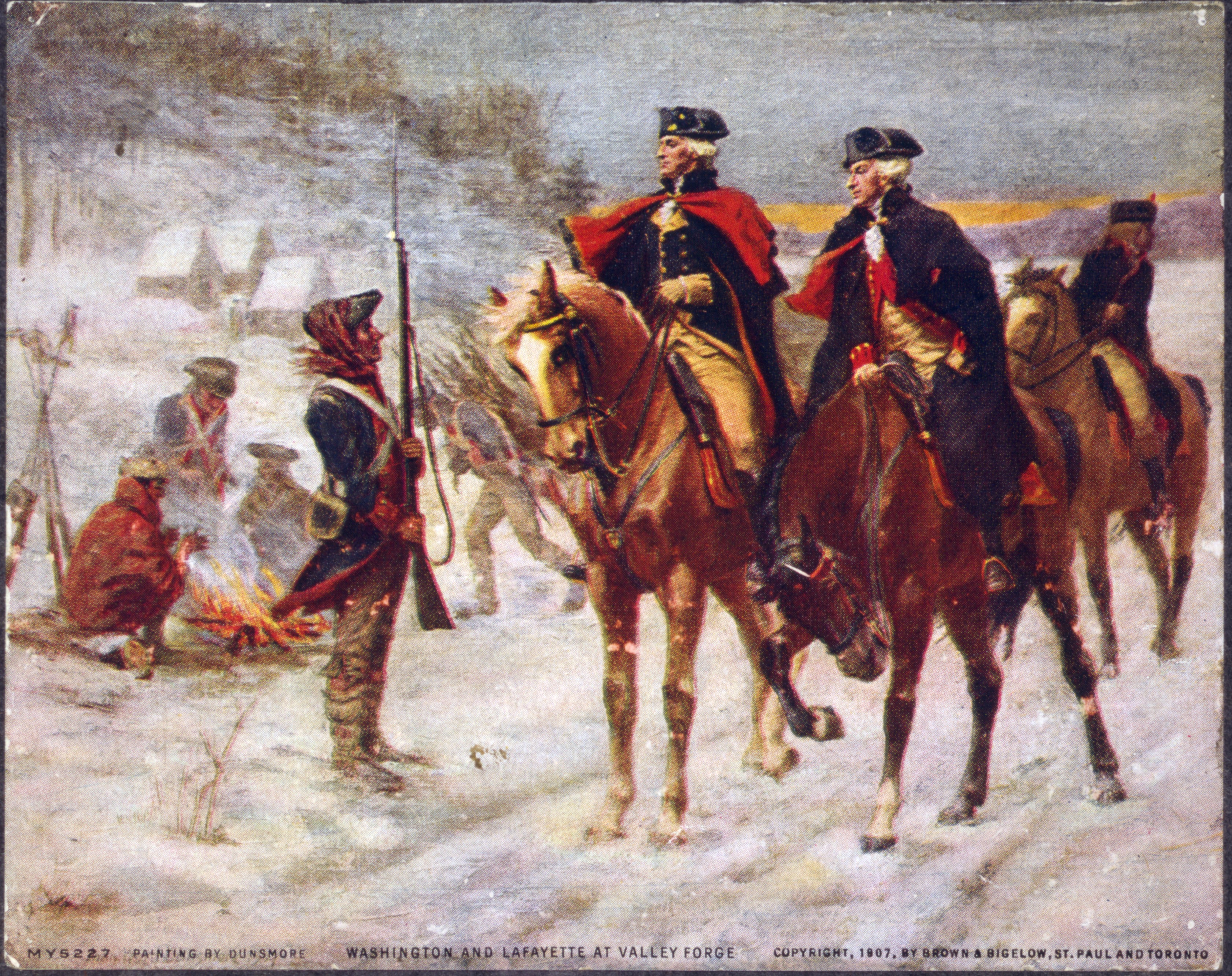
3.2. Campaigns in New Jersey and Rhode Island
Faced with the prospect of French intervention, the British sought to concentrate their land and naval forces in New York City, and they began to evacuate Philadelphia in May 1778. Washington dispatched Lafayette with a 2,200-man force on 18 May to reconnoiter near Barren Hill, Pennsylvania. The next day, the British heard that he had made camp nearby and sent 5,000 men to capture him. General Howe led a further 6,000 soldiers on 20 May and ordered an attack on his left flank. Though the flank scattered, Lafayette organized an orderly retreat while the British remained indecisive. To feign numerical superiority, Lafayette ordered men to appear from the woods on an outcropping (now Lafayette Hill, Pennsylvania) and to fire upon the British periodically. His troops simultaneously escaped via a sunken road, and he was then able to cross Matson's Ford with the remainder of his force.
The British then marched from Philadelphia toward New York. The Continental Army followed and finally attacked at Monmouth Courthouse in central New Jersey. Washington initially considered Lafayette for command of the attacking force but ultimately appointed General Charles Lee to lead the charge at the Battle of Monmouth. Lee moved against the British flank on 28 June 1778. However, he gave conflicting orders soon after fighting began, causing chaos in the American ranks. Lafayette sent a message to Washington to urge him to the front; upon his arrival, he found Lee's men in retreat. Washington relieved Lee, took command, and rallied the American force, repelling two British attacks. After suffering significant casualties at Monmouth, the British withdrew in the night and successfully reached New York.
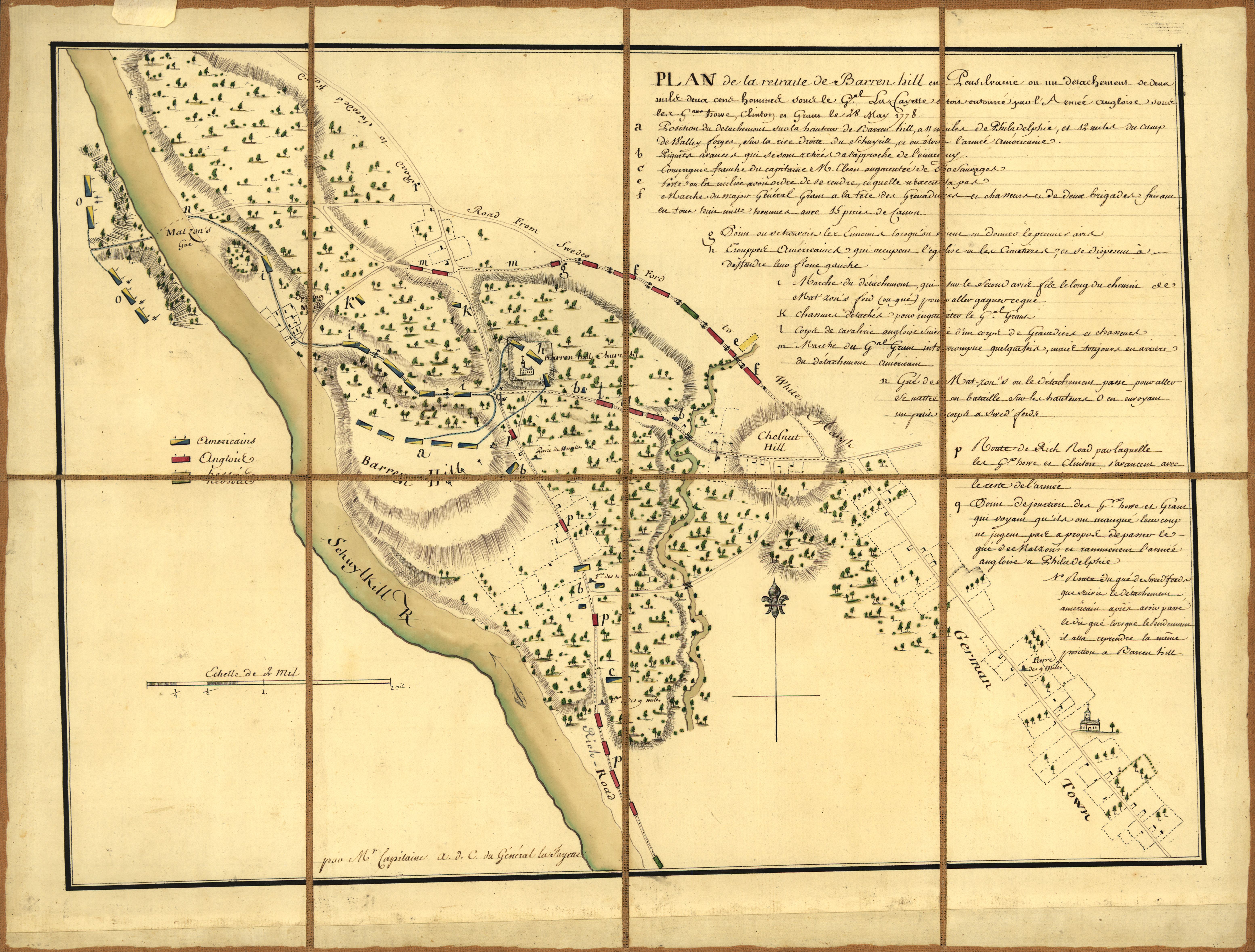
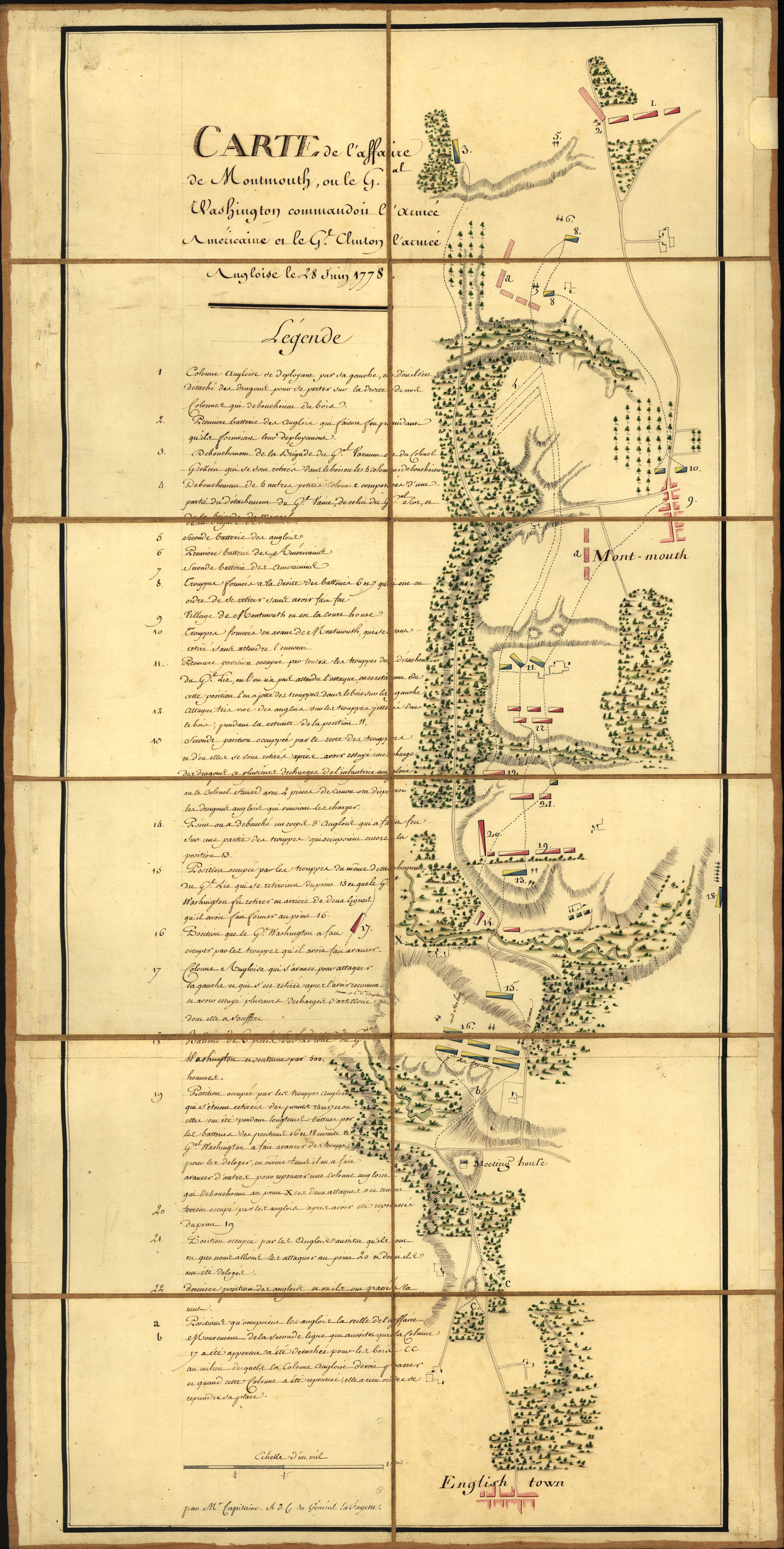
The French fleet arrived at Delaware Bay on 8 July 1778 under Admiral d'Estaing, with whom General Washington planned to attack Newport, Rhode Island, the other major British base in the north. Lafayette and General Greene were sent with a 3,000-man force to participate in the attack. Lafayette desired to control a joint Franco-American force but was rebuffed by the admiral. On 9 August, the American land force attacked the British without consulting d'Estaing. The Americans asked d'Estaing to place his ships in Narragansett Bay, but he refused and sought to defeat the British Royal Navy at sea. The fighting was inconclusive as a storm scattered and damaged both fleets.
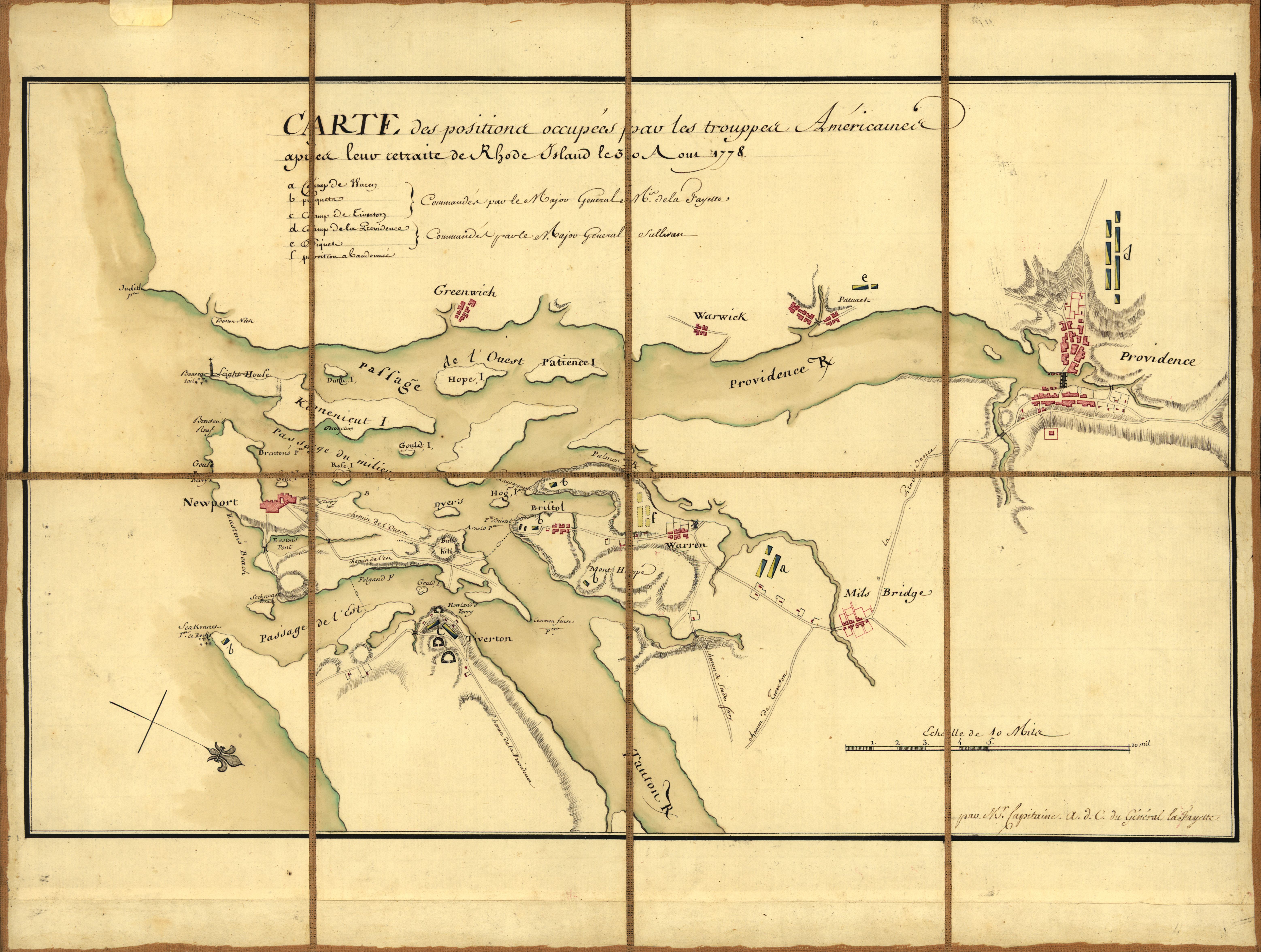
D'Estaing moved his ships north to Boston for repairs, where it faced an angry demonstration from Bostonians who considered the French departure from Newport to be a desertion. John Hancock and Lafayette were dispatched to calm the situation, and Lafayette then returned to Rhode Island to prepare the retreat made necessary by d'Estaing's departure. For these actions, he was cited by the Continental Congress for "gallantry, skill, and prudence." Lafayette realized the Boston riot had damaged Franco-American relations. He wanted to expand the war to fight the British elsewhere in America and even in Europe under the French flag, but he found little interest in his proposals. In October 1778, he requested permission from Washington and Congress to go home on leave. They agreed, with Congress voting to give him a ceremonial sword to be presented to him in France. His departure was delayed by illness, and he sailed for France in January 1779.
3.3. Return to France and Securing Support
Lafayette reached Paris in February 1779, where he was placed under house arrest for eight days for disobeying the king by going to America. This was merely a face-saving measure by Louis XVI; Lafayette was given a hero's welcome and was soon invited to hunt with the king. As the American envoy was ill, Benjamin Franklin's grandson, William Temple Franklin, presented Lafayette with the gold-encrusted sword commissioned by the Continental Congress, valued at 4.80 K livres.
Lafayette strongly pushed for an invasion of Britain, with himself seeking a major command in the French forces. Spain had by then allied with France against Britain and sent ships to the English Channel in support. However, the Spanish ships did not arrive until August 1779 and were met by a faster squadron of British ships that the combined French and Spanish fleet could not catch. In September, the invasion was abandoned, and Lafayette turned his hopes toward returning to America. In December 1779, Adrienne gave birth to Georges Washington Lafayette, their first son.
Lafayette worked with Benjamin Franklin to secure the promise of 6,000 soldiers to be sent to America, commanded by General Jean-Baptiste de Rochambeau. Lafayette would resume his position as a major general of American forces, serving as liaison between Rochambeau and Washington, who would be in command of both nations' forces. In March 1780, he departed from Rochefort for America aboard the frigate Hermione, arriving in Boston on 27 April 1780.
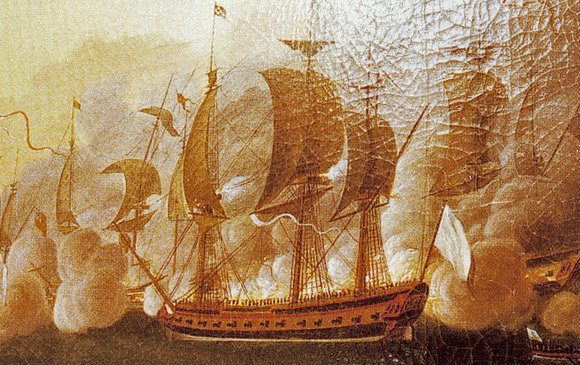
3.4. Virginia Campaign and Siege of Yorktown
On his second return to America, Lafayette found the American cause at a low ebb, rocked by several military defeats, especially in the south. Lafayette was greeted in Boston with enthusiasm, seen as "a knight in shining armor from the chivalric past, come to save the nation." He journeyed southwest and on 10 May 1780, had a joyous reunion with Washington at Morristown, New Jersey. The general and his officers were delighted to hear that the large French force promised to Lafayette would be coming to their aid. Washington, aware of Lafayette's popularity, had him write (with Alexander Hamilton correcting his spelling) to state officials to urge them to provide more troops and provisions to the Continental Army. This bore fruit in the coming months, as Lafayette awaited the arrival of the French fleet. However, when the fleet arrived, there were fewer men and supplies than expected, and Rochambeau decided to wait for reinforcements before seeking battle with the British. This was unsatisfactory to Lafayette, who proposed grandiose schemes for the taking of New York City and other areas, and Rochambeau briefly refused to receive Lafayette until the young man apologized. Washington counseled the marquis to be patient.

That summer, Washington placed Lafayette in charge of a division of troops. The marquis spent lavishly on his command, which patrolled North Jersey and adjacent New York state. Lafayette saw no significant action, and in November, Washington disbanded the division, sending the soldiers back to their state regiments. The war continued badly for the Americans, with most battles in the south going against them, and General Benedict Arnold abandoning them for the British side.
Lafayette spent the first part of the winter of 1780-1781 in Philadelphia, where the American Philosophical Society elected him its first foreign member. Congress asked him to return to France to lobby for more men and supplies, but Lafayette refused, sending letters instead.
After the Continental victory at the Battle of Cowpens in the Province of South Carolina, in January 1781, Washington ordered Lafayette to re-form his force in Philadelphia and go south to the Colony of Virginia to link up with troops commanded by Baron von Steuben. The combined force was to try to trap British forces commanded by Benedict Arnold, with French ships preventing his escape by sea. If Lafayette was successful, Arnold was to be summarily hanged. British command of the seas prevented the plan, though Lafayette and a small part of his force was able to reach von Steuben in Yorktown, Virginia. Von Steuben sent a plan to Washington, proposing to use land forces and French ships to trap the main British force under Lord Cornwallis. When he received no new orders from Washington, Lafayette began to move his troops north toward Philadelphia, only to be ordered to Virginia to assume military command there. An outraged Lafayette assumed he was being abandoned in a backwater while decisive battles took place elsewhere, and objected to his orders in vain. He also sent letters to the Chevalier de la Luzerne, French ambassador in Philadelphia, describing how ill-supplied his troops were. As Lafayette hoped, la Luzerne sent his letter on to France with a recommendation of massive French aid, which, after being approved by the king, would play a crucial part in the battles to come. Washington, fearing a letter might be captured by the British, could not tell Lafayette that he planned to trap Cornwallis in a decisive campaign.
Lafayette evaded Cornwallis's attempts to capture him in Richmond. In June 1781, Cornwallis received orders from London to proceed to the Chesapeake Bay and to oversee construction of a port, in preparation for an overland attack on Philadelphia. As the British column traveled, Lafayette sent small squads that would appear unexpectedly, attacking the rearguard or foraging parties, and giving the impression that his forces were larger than they were.
On 4 July, the British left Williamsburg and prepared to cross the James River. Cornwallis sent only an advance guard to the south side of the river, hiding many of his other troops in the forest on the north side, hoping to ambush Lafayette. On 6 July, Lafayette ordered General "Mad" Anthony Wayne to strike British troops on the north side with roughly 800 soldiers. Wayne found himself vastly outnumbered, and, instead of retreating, led a bayonet charge. The charge bought time for the Americans, and the British did not pursue. The Battle of Green Spring was a victory for Cornwallis, but the American army was bolstered by the display of courage by the men.
By August, Cornwallis had established the British at Yorktown, and Lafayette took up position on Malvern Hill, stationing artillery surrounding the British, who were close to the York River, and who had orders to construct fortifications to protect the British ships in Hampton Roads. Lafayette's containment trapped the British when the French fleet arrived and won the Battle of the Virginia Capes, depriving Cornwallis of naval protection. On 14 September 1781, Washington's forces joined Lafayette's at Williamsburg. On 28 September, with the French fleet blockading the British, the combined forces laid siege to Yorktown. On 14 October, Lafayette's 400 men on the American right took Redoubt 9 after Alexander Hamilton's forces had charged Redoubt 10 in hand-to-hand combat. These two redoubts were key to breaking the British defenses. After a failed British counter-attack, Cornwallis surrendered on 19 October 1781. The siege of Yorktown was the last major land battle of the American Revolution, forcing the British government to the negotiating table.
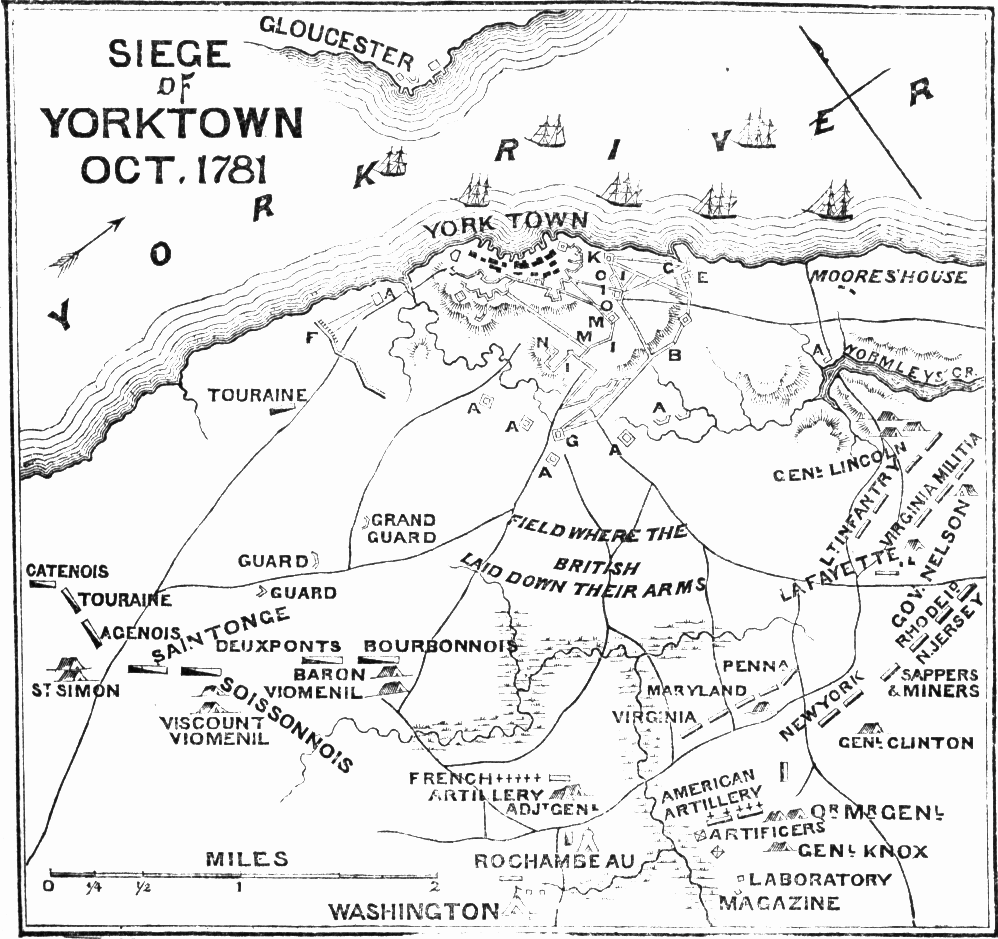
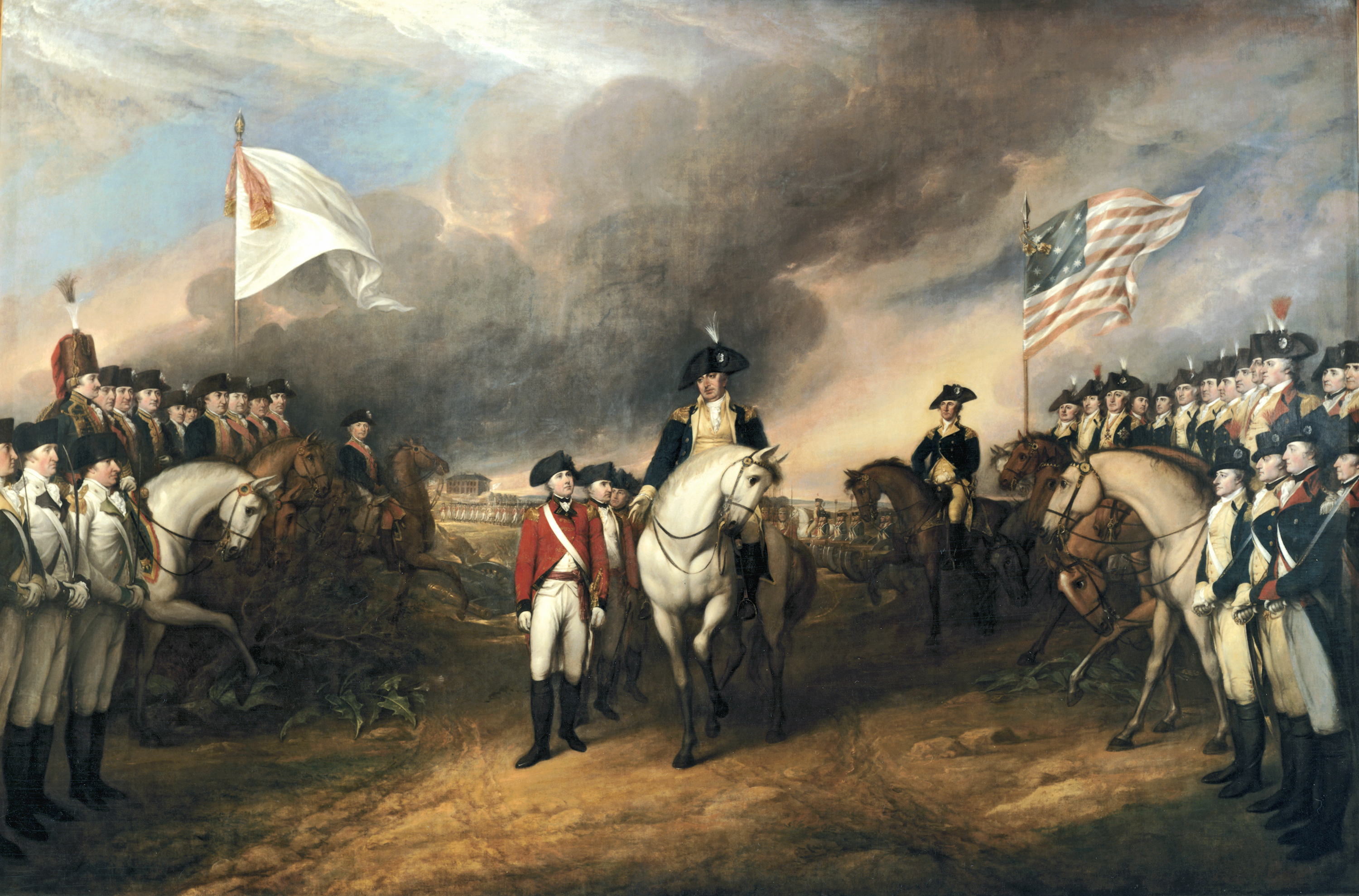
4. Activities Before the French Revolution
After the American Revolutionary War, Lafayette's fame as the "Hero of Two Worlds" propelled him into significant diplomatic and social engagements, where he actively promoted human rights and strengthening transatlantic ties, even initiating practical steps towards abolitionism.
4.1. Diplomatic Activities as the 'Hero of Two Worlds'
Yorktown was the last major land battle of the American Revolution, but the British still held several major port cities. Lafayette wanted to lead expeditions to capture them, but Washington felt that he would be more useful seeking additional naval support from France. Congress appointed him its advisor to America's envoys in Europe, Benjamin Franklin in Paris, John Jay in Madrid, and John Adams in The Hague, instructing them "to communicate and agree on everything with him." Congress also sent Louis XVI an official letter of commendation on the Marquis's behalf.
Lafayette left Boston for France on 18 December 1781, where he was welcomed as a hero, and he was received at the Palace of Versailles on 22 January 1782. He witnessed the birth of his daughter, whom he named Marie-Antoinette Virginie upon Thomas Jefferson's recommendation. He was promoted to maréchal de camp, skipping numerous ranks, and he was made a Knight of the Order of Saint Louis. He worked on a combined French and Spanish expedition against the British West Indies in 1782, as no formal peace treaty had yet been signed. The Treaty of Paris was signed between Great Britain and the United States on 20 January 1783, which made the expedition unnecessary; Lafayette took part in those negotiations.
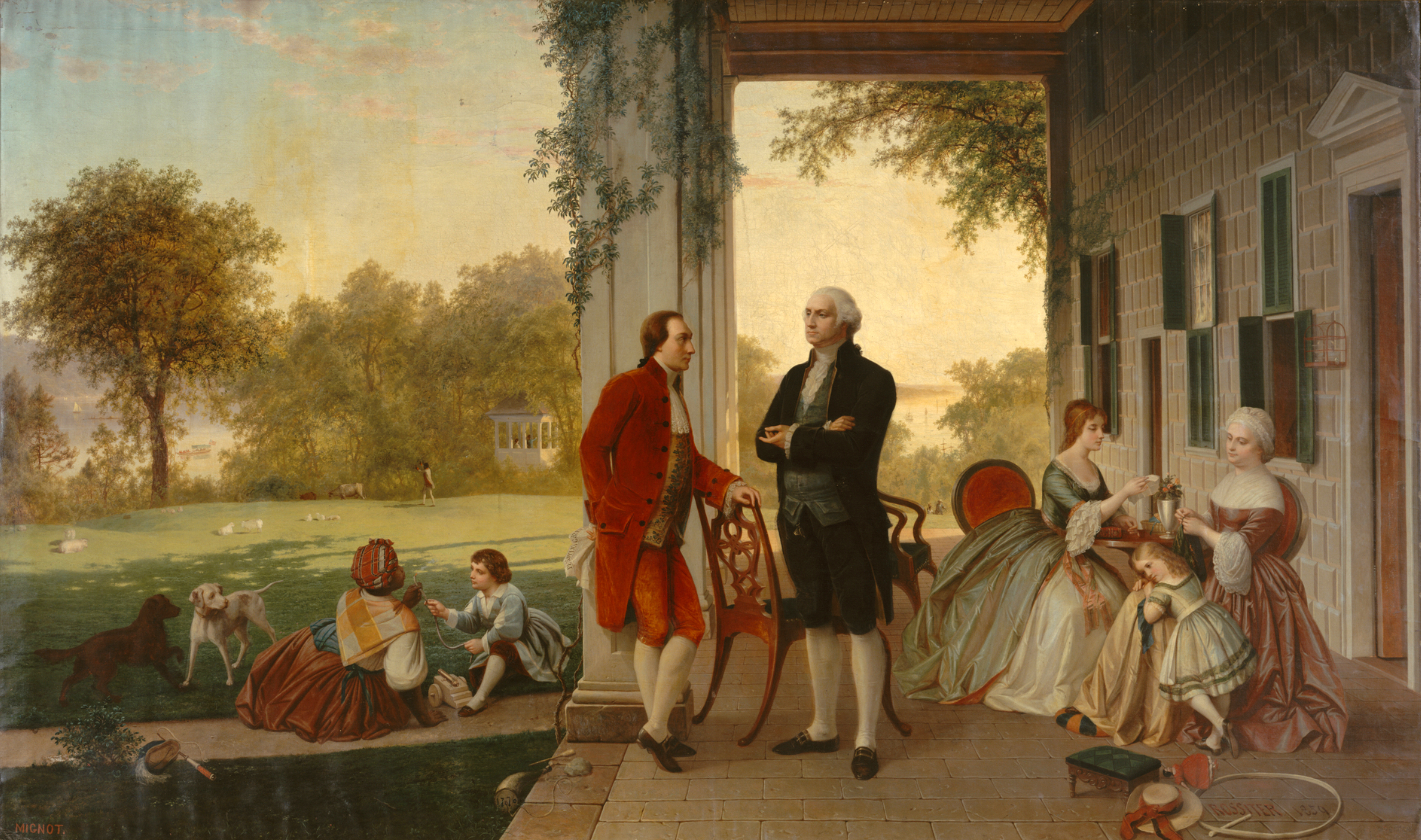
Lafayette worked with Jefferson to establish trade agreements between the United States and France, aiming to reduce America's debt to France and secure commitments for tobacco and whale oil. He joined the Society of the Friends of the Blacks, a French abolitionist group which advocated for the abolition of the Atlantic slave trade and equal rights for free people of color. He urged the emancipation of American slaves and their establishment as tenant farmers in a 1783 letter to Washington, who was a slave owner.
After his return to France, Lafayette engaged in an affair with the Comtesse Aglaé d'Hunolstein, ending their relationship on 27 March 1783 due to opposition from her family. He also reportedly had a relationship with Madame de Simiane. Historians debate whether Adrienne, Lafayette's wife, was aware of these affairs. Lafayette's detractors often spread rumors about him. For several years, Lafayette's primary base of operations was the Hôtel de La Fayette in Paris, which served as a de facto American headquarters. Benjamin Franklin, John and Sarah Jay, and John and Abigail Adams met there every Monday, dining with Lafayette's family and liberal nobility, including Clermont-Tonnerre and Madame de Staël. Lafayette continued to work on lowering trade barriers in France to American goods and assisting Franklin and Jefferson in seeking treaties of amity and commerce with European nations. He also sought to correct the injustices that Huguenots in France had endured since the revocation of the Edict of Nantes a century before. In 1785, he visited Silesia to observe Prussian military exercises and met with King Frederick II. He also met Emperor Joseph II during a subsequent visit to Austria, fostering connections with European monarchs and aristocrats. In 1786, he acquired the Lordship of Langeac in Auvergne for 188.80 K livres, hoping to elevate his duchy, but this goal was not realized.
4.2. Views on Slavery and Abolitionist Movement
Lafayette developed his views on slavery while in the United States, which he later applied in France. Initially viewing enslaved people as property, his perspective shifted after meeting James Armistead, an enslaved African American who served as a spy for the American Revolution and provided crucial intelligence that contributed to the victory at Yorktown. This encounter led Lafayette to propose using enslaved individuals as soldiers for the revolutionary cause. From 1783, in correspondence with Washington, Lafayette advocated for the abolition of slavery and their establishment as tenant farmers. When Washington hesitated, Lafayette took practical steps, purchasing land in Cayenne, French Guiana, for an experiment in emancipation. There, he established a plantation called "La Belle Gabrielle" and prohibited the buying or selling of the 70 enslaved people on his properties in 1785 and 1786. He believed in a gradual emancipation process, acknowledging the economic role of slavery. However, he never personally freed his enslaved people, and when French authorities confiscated his properties in 1795, the remaining 63 enslaved individuals on the three plantations were sold by colonial officials in Cayenne.
Lafayette dedicated his life to abolitionism, proposing a slow emancipation process for enslaved people, recognizing the crucial role slavery played in many economies. He hoped his ideas would be adopted by Washington to free enslaved people in the United States and spread from there. Washington eventually began implementing some of these practices on his own plantation at Mount Vernon but continued to own enslaved people until his death. In a letter to Matthew Clarkson, the mayor of Philadelphia, Lafayette declared, "I would never have drawn my sword in the cause of America, if I could have conceived that thereby I was founding a land of Slavery." He played a significant role in the abolition of slavery in France in 1794. The Haitian Revolution, which erupted two years after the Declaration of the Rights of Man and of the Citizen, also reflected the growing anti-slavery sentiments. His grandson, Gustave de Beaumont, later wrote a novel addressing issues of racial discrimination.
4.3. 1784-1785 Grand Tour of the United States
Lafayette visited America again in 1784-1785, where he enjoyed an enthusiastic welcome, visiting all states except Georgia. The trip included a visit to Washington's farm at Mount Vernon on 17 August. He addressed the Virginia House of Delegates, where he called for "liberty of all mankind" and urged the abolition of slavery. He also urged the Pennsylvania Legislature to help form a federal union, as the states were then bound by the Articles of Confederation. He visited the Mohawk Valley in New York to participate in peace negotiations with the Iroquois, some of whom he had met in 1778.
He received an honorary degree from Harvard University, a portrait of Washington from the city of Boston, and a bust from the state of Virginia. Maryland's legislature honored him by making him and his male heirs "natural born Citizens" of the state, an act that read: "Be it enacted by the General Assembly of Maryland - that the Marquis de la Fayette and his Heirs male forever shall be and they and each of them are hereby deemed adjudged and taken to be natural born Citizens of this State and shall henceforth be instilled to all the Immunities, Rights and Privileges of natural born Citizens thereof, they and every one of them conforming to the Constitution and Laws of this State in the Enjoyment and Exercise of such Immunities, Rights and Privileges." This made him a natural-born citizen of the United States after the 1789 ratification of the Constitution. Lafayette later boasted that he had become an American citizen before the concept of French citizenship even existed. Connecticut, Massachusetts, and Virginia also granted him citizenship.

5. Role in the French Revolution
Lafayette's involvement in the French Revolution saw him transition from a celebrated hero to a controversial figure as he attempted to navigate the tumultuous political landscape, ultimately facing exile and imprisonment for his moderate stance.
5.1. Convocation of the Assembly of Notables and Estates-General
On 29 December 1786, King Louis XVI called an Assembly of Notables in response to France's fiscal crisis. The king appointed Lafayette to the body, which convened on 22 February 1787. In his speeches, Lafayette decried those with court connections who had profited from advance knowledge of government land purchases; he advocated for reform. He called for a "truly national assembly" that represented the whole of France, not just the privileged classes. This demand, along with proposals to abolish unnecessary royal estates and court positions, was approved.
Instead, the king chose to summon an Estates-General of 1789, to convene in 1789. Lafayette was elected as a representative of the nobility (the Second Estate) from Riom. Traditionally, the Estates-General cast one vote for each of the three Estates: clergy, nobility, and commons, meaning the much larger commons was generally outvoted. The Estates-General convened on 5 May 1789; from the outset, debate began on whether the delegates should vote by head or by Estate. If by Estate, then the nobility and clergy would be able to outvote the commons; if by head, then the larger Third Estate (with 604 members compared to 295 for the clergy and 278 for the nobility) could dominate. Before the meeting, as a member of the "Committee of Thirty" (a group of "Patriots" advocating social reform), Lafayette agitated for voting by head, rather than by estate. He could not get a majority of his own Estate to agree, but the clergy (many of whom were from peasant or artisan backgrounds and more flexible) was willing to join with the commons, and on 17 June, the group declared itself the National Assembly.
Three days later, when the loyalist response was to lock out the group, including Lafayette, from their meeting hall, the excluded members gathered at the indoor tennis court and swore not to separate until a constitution was established. Lafayette and 46 others joined the National Assembly, followed by more delegates on 27 June. The Assembly continued to meet, and on 11 July 1789, Lafayette presented a draft of the "Declaration of the Rights of Man and of the Citizen" to the Assembly, written by himself in consultation with Jefferson. This document, emphasizing basic human rights like liberty, property, security, and resistance to oppression, was inspired by the United States Declaration of Independence.
The next day, after the dismissal of Finance Minister Jacques Necker (who was seen as a reformer), lawyer Camille Desmoulins assembled between 700 and 1,000 armed insurgents. The king had the royal army under the duc de Broglie surround Paris. On 14 July, the fortress known as the Bastille was stormed by the insurgents. On July 13, the Assembly had elected Lafayette as its vice president.
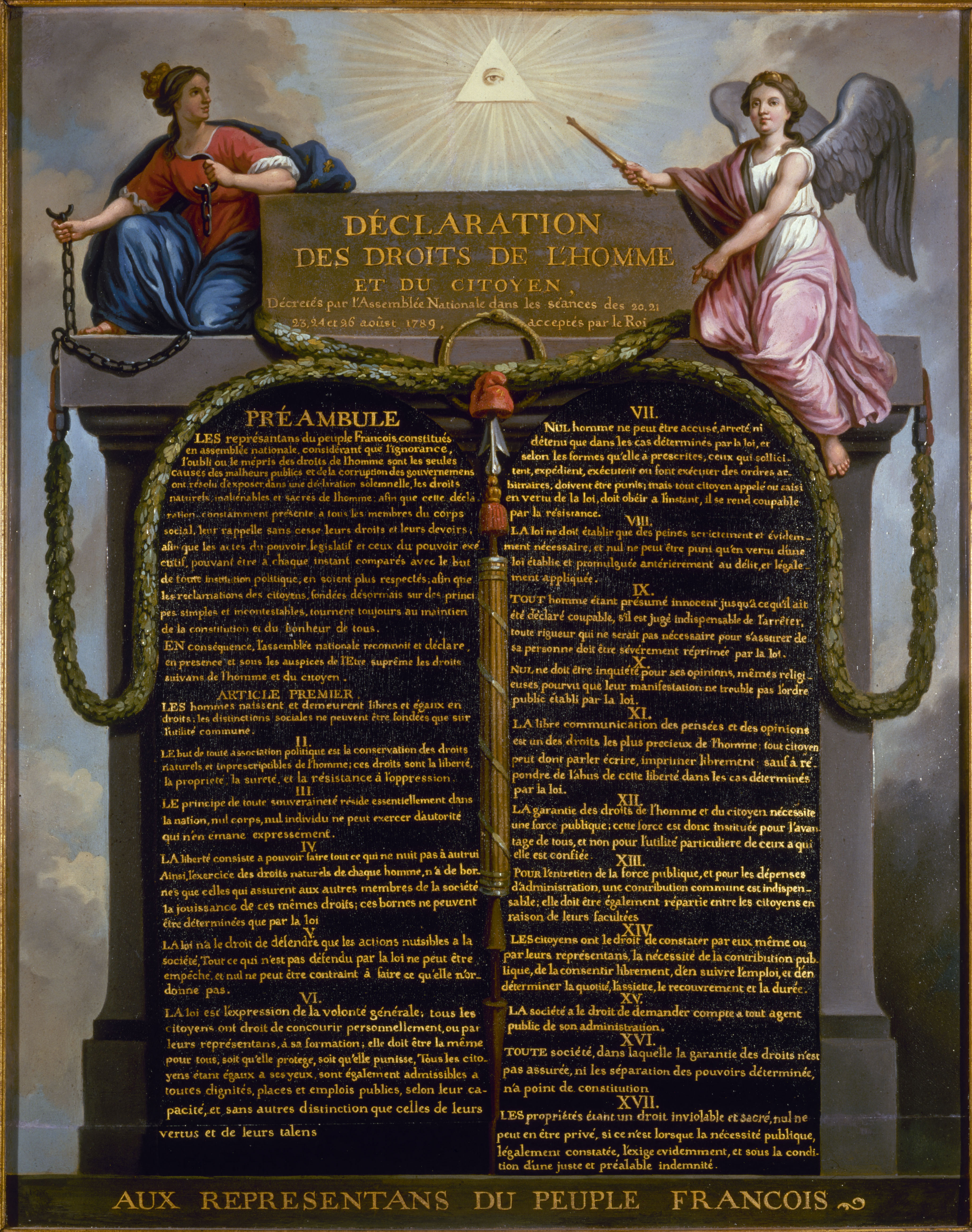
5.2. Commander-in-Chief of the National Guard
On 15 July, Lafayette was acclaimed commander-in-chief of the Parisian National Guard, an armed force established to maintain order under the control of the Assembly, responsible for military service, policing, traffic control, sanitation, lighting, and other local administrative matters. Lafayette proposed the name and the symbol of the group: a blue, white, and red cockade. This combined the red and blue colors of the city of Paris with the royal white, originating the French tricolor. He faced a difficult task as head of the Guard; the king and many loyalists considered him and his supporters to be little better than revolutionaries, whereas many commoners felt that he was helping the king to keep power via this position.
The National Assembly approved the Declaration on 26 August, but the king rejected it on 2 October. Three days later, a Parisian crowd led by women fishmongers marched to Versailles in response to the scarcity of bread. Members of the National Guard followed the march, with Lafayette reluctantly leading them. At Versailles, the king accepted the Assembly's votes on the Declaration but refused requests to go to Paris, and the crowd broke into the palace at dawn. Lafayette took the royal family onto the palace balcony and attempted to restore order, but the crowd insisted that the king and his family move to Paris and the Tuileries Palace. The king came onto the balcony and the crowd started chanting "Vive le Roi!" Marie Antoinette then appeared with her children, but she was told to send the children back in. She returned alone and people shouted to shoot her, but she stood her ground and no one opened fire. Lafayette kissed her hand, leading to cheers from the crowd.
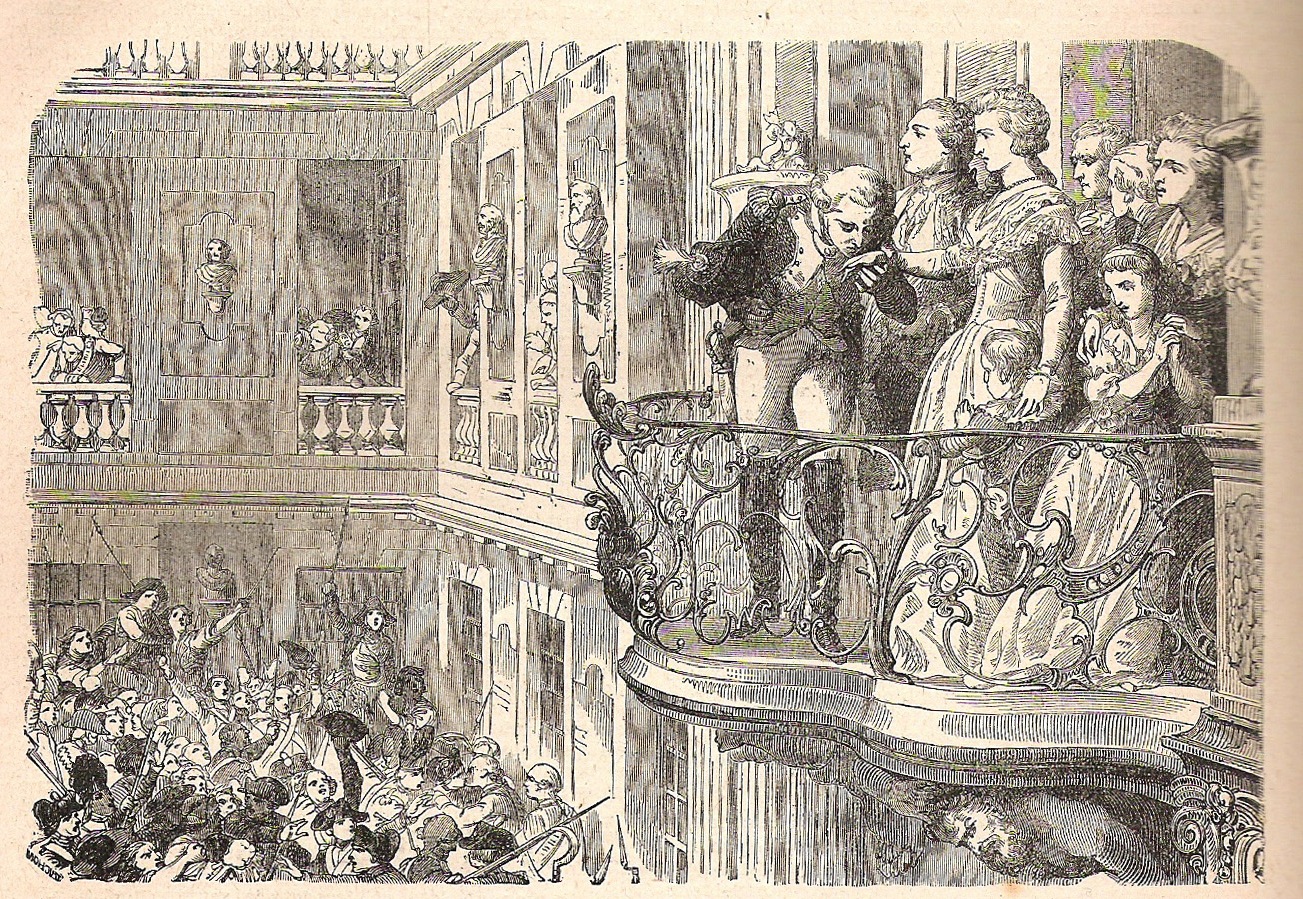
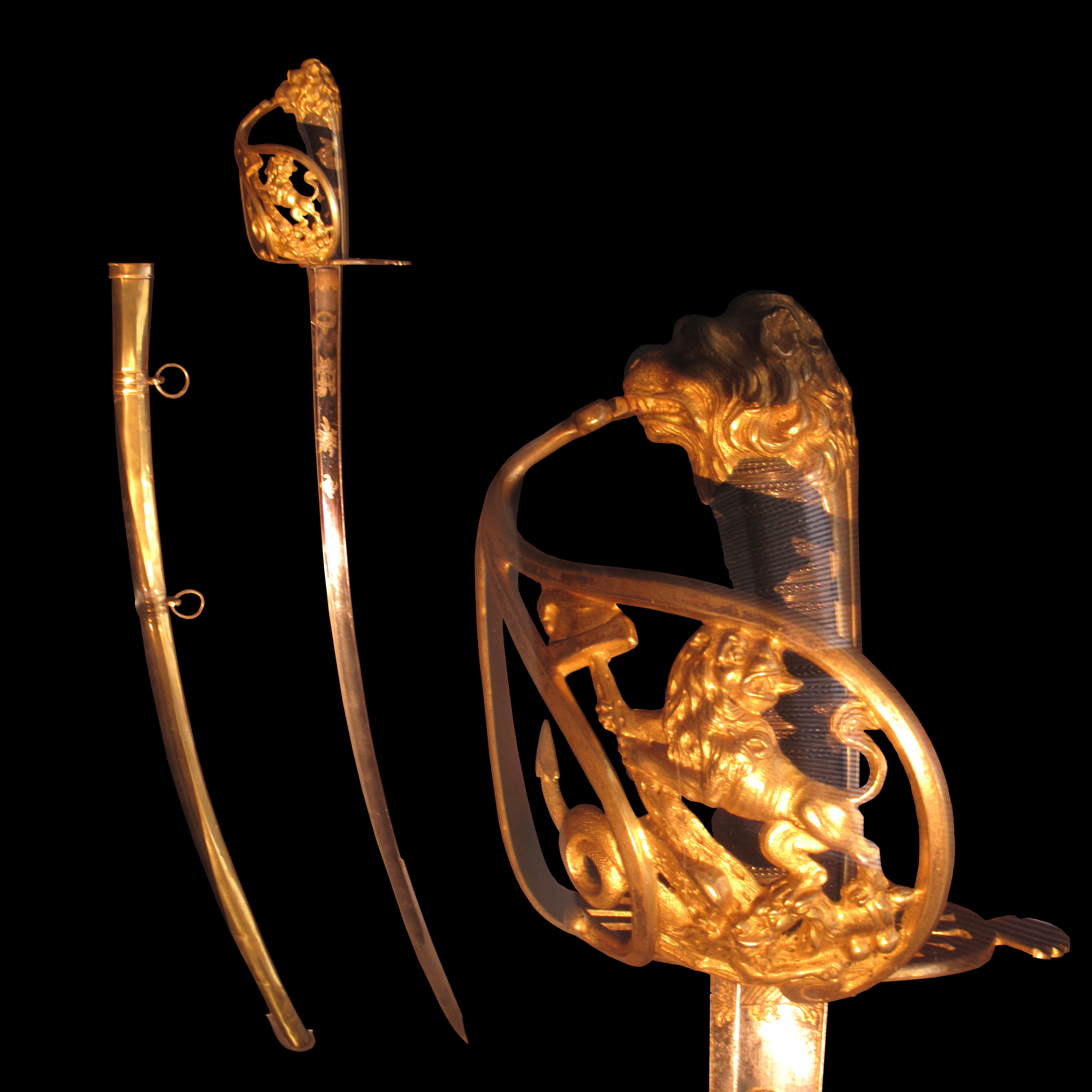
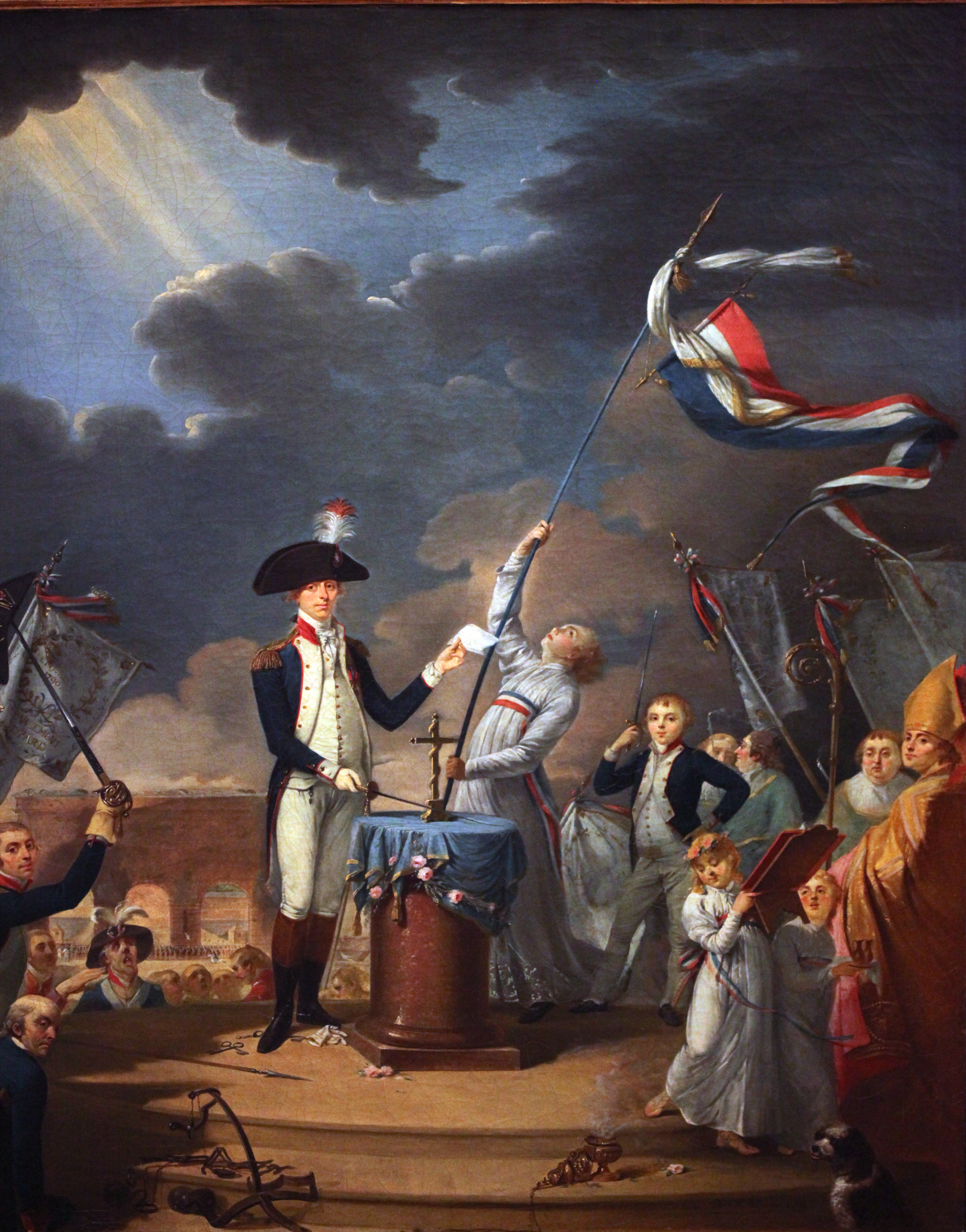
As leader of the National Guard, Lafayette attempted to maintain order and steer a middle ground, even as the radicals gained increasing influence. He and Paris' mayor Jean Sylvain Bailly instituted a political club on 12 May 1790 called the Society of 1789, whose intention was to provide balance to the influence of the radical Jacobins. Lafayette helped organize and lead the assembly at the Fête de la Fédération on 14 July 1790, where he, alongside the National Guard and the king, took the civic oath on the Champs de Mars vowing to "be ever faithful to the nation, to the law, and to the king; to support with our utmost power the constitution decreed by the National Assembly, and accepted by the king." In the eyes of the royalist factions, Lafayette took a large risk holding a largely undisciplined group at the Champs de Mars in fear for the safety of the king, whereas for Jacobins this solidified in their eyes Lafayette's royalist tendencies and an encouragement of the common people's support of the monarchy.
Lafayette continued to work for order in the coming months. He and part of the National Guard left the Tuileries on 28 February 1791 to handle a conflict in Vincennes, and hundreds of armed nobles arrived at the Tuileries to defend the king while he was gone. However, there were rumors that these nobles had come to take the king away and place him at the head of a counter-revolution. Lafayette quickly returned to the Tuileries and disarmed the nobles after a brief standoff. The event came to be known as the Day of Daggers, and it boosted Lafayette's popularity with the French people for his quick actions to protect the king. Nonetheless, the royal family were increasingly prisoners in their palace. The National Guard disobeyed Lafayette on 18 April and prevented the king from leaving for Saint-Cloud where he planned to attend Mass.
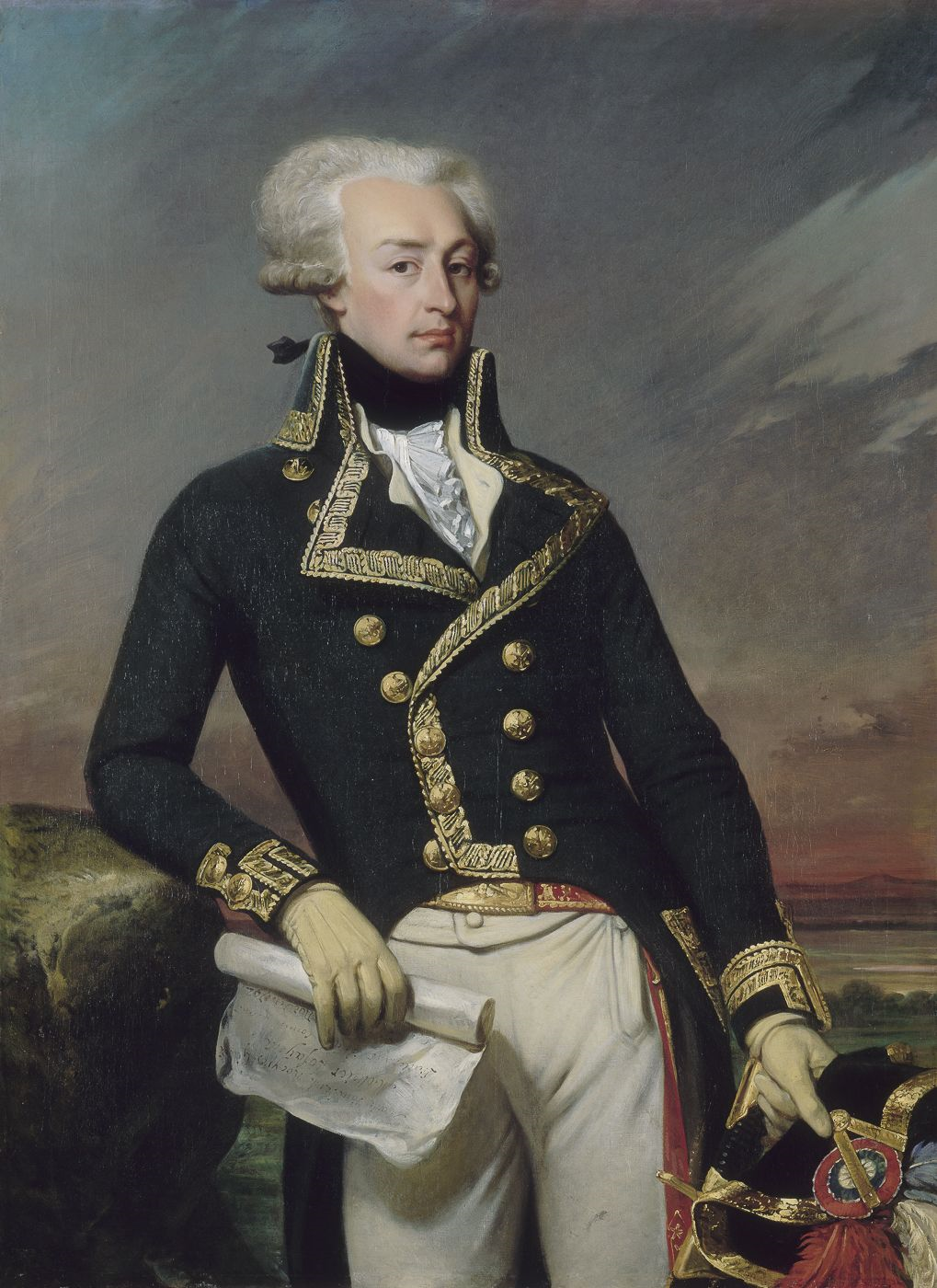
5.3. Royal Family's Flight to Varennes and His Downfall
A plot known as the Flight to Varennes almost enabled the king to escape from France on 20 June 1791. The king and queen had escaped from the Tuileries Palace, essentially under the watch of Lafayette and the National Guard. Being notified of their escape, Lafayette sent the Guard out in a multitude of directions in order to retrieve the escapee monarchs. Five days later, Lafayette and the National Guard led the royal carriage back into Paris amidst a crowding mob calling for the heads of the monarchs as well as Lafayette. Lafayette had been responsible for the royal family's custody as leader of the National Guard, and he was thus blamed by extremists such as Georges Danton, who declared in a speech directed towards Lafayette: "You swore that the king would not leave. Either you sold out your country or you are stupid for having made a promise for a person whom you could not trust... France can be free without you." He was further called a traitor to the people by Maximilien Robespierre. These accusations made Lafayette appear a royalist, damaged his reputation in the eyes of the public, and strengthened the hands of the Jacobins and other radicals in opposition to him. He continued to urge the constitutional rule of law, but he was drowned out by the mob and its leaders. After the royal family's flight, the Feuillant faction separated from the Jacobins, with Lafayette and Jean Sylvain Bailly being seen as constitutional monarchists associated with the Feuillants.
5.4. Champ de Mars Massacre and Exile
Lafayette's public standing continued to decline through the latter half of 1791. The radical Cordeliers organized an event at the Champ de Mars on 17 July to gather signatures on a petition to the National Assembly that it either abolish the monarchy or allow its fate to be decided in a referendum. The assembled crowd was estimated to be anywhere from 10,000 to 50,000 people. The protesters, finding two men hiding under an altar at the event, accused of being either spies or of potentially planting explosives, eventually hung the men from lampposts and placed their heads on the ends of pikes. Lafayette rode into the Champ de Mars at the head of his troops to restore order, but they were met with the throwing of stones from the crowd. An assassination attempt was made on Lafayette, however the gunman's pistol misfired at close range. The soldiers began to first fire above the crowd in order to intimidate and disperse them, which only led to retaliation and eventually the death of two volunteer chasseurs. The National Guard was ordered to fire on the crowd, wounding and killing an unknown number of people. Accounts from those close to Lafayette claim that around ten citizens were killed in the event, whereas other accounts propose fifty-four, and the sensational newspaper publisher Jean-Paul Marat claimed over four hundred bodies had been disposed of into the river later that night.
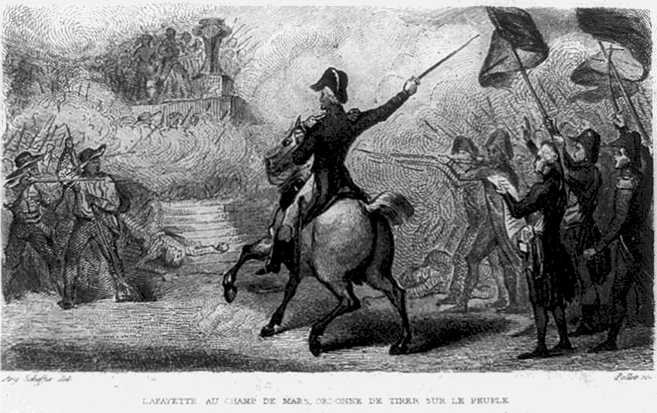
Martial law was declared, and the leaders of the mob fled and went into hiding, such as Danton and Marat. Lafayette's reputation among many political clubs decreased dramatically, especially with articles in the press, such as the Révolutions de Paris describing the event at the Champ de Mars as "Men, Women, and Children were massacred on the altar of the nation on the Field of the Federation." Immediately after the massacre, a crowd of rioters attacked Lafayette's home and attempted to harm his wife. The Assembly finalized a constitution in September, and Lafayette resigned from the National Guard in early October, with a semblance of constitutional law restored.
Lafayette returned to his home province of Auvergne in October 1791. In November, he ran for Mayor of Paris but lost significantly to the Girondin candidate. France declared war on Austria on 20 April 1792, and preparations to invade the Austrian Netherlands (today's Belgium) began. Lafayette, who had been promoted to Lieutenant General on 30 June 1791, received command of one of the three armies, the Army of the Centre, based at Metz, on 14 December 1791. Lafayette did his best to mold inductees and National Guardsmen into a cohesive fighting force but found that many of his troops were Jacobin sympathizers and hated their superior officers. This sentiment was common in the army, as demonstrated after the Battle of Marquain, when the routed French troops dragged their commander Théobald Dillon to Lille, where he was torn to pieces by the mob. One of the army commanders, Rochambeau, resigned. Lafayette, along with the third commander, Nicolas Luckner, asked the Assembly to begin peace talks, concerned at what might happen if the troops saw another battle.
In June 1792, Lafayette criticized the growing influence of the radicals through a letter to the Assembly from his field post, and ended his letter by calling for their parties to be "closed down by force." He misjudged his timing, for the radicals were in full control in Paris. Lafayette went there, and on 28 June delivered a fiery speech before the Assembly denouncing the Jacobins and other radical groups. He was instead accused of deserting his troops. Lafayette called for volunteers to counteract the Jacobins; when only a few people showed up, he understood the public mood and hastily left Paris. Robespierre called him a traitor and the mob burned him in effigy. He was transferred to command of the Army of the North on 12 July 1792.
The 25 July Brunswick Manifesto, which warned that Paris would be destroyed by the Austrians and Prussians if the king was harmed, led to the downfall of Lafayette, and of the royal family. A mob attacked the Tuileries on 10 August, and the king and queen were imprisoned at the Assembly, then taken to the Temple. The Assembly abolished the monarchy - the king and queen would be beheaded in the coming months. On 14 August, the minister of justice, Danton, put out a warrant for Lafayette's arrest. Hoping to travel to the United States, Lafayette entered the Austrian Netherlands.
6. Imprisonment and Release
Lafayette's flight from France led to his capture and prolonged imprisonment, during which his family and American sympathizers tirelessly worked to secure his freedom.
6.1. Prison Life and Family's Efforts
Lafayette was taken prisoner by the Austrians near Rochefort when another former French officer, Jean-Xavier Bureau de Pusy, asked for rights of transit through Austrian territory on behalf of a group of French officers. This was initially granted, as it had been for others fleeing France, but was revoked when the famous Lafayette was recognized. Frederick William II of Prussia, Austria's ally against France, had once received Lafayette, but that was before the French Revolution - the king now saw him as a dangerous fomenter of rebellion, to be interned to prevent him from overthrowing other monarchies.
Lafayette was held at Nivelles, then transferred to Luxembourg where a coalition military tribunal declared him, de Pusy, and two others to be prisoners of state for their roles in the Revolution. The tribunal ordered them held until a restored French king could render final judgment on them. On 12 September 1792, pursuant to the tribunal's order, the prisoners were transferred to Prussian custody. The party traveled to the Prussian fortress-city of Wesel, where the Frenchmen remained in verminous individual cells in the central citadel from 19 September to 22 December 1792. When victorious French revolutionary troops began to threaten the Rhineland, King Frederick William II transferred the prisoners east to the citadel at Magdeburg, where they remained an entire year, from 4 January 1793 to 4 January 1794.
Frederick William decided that he could gain little by continuing to battle the unexpectedly successful French forces, and that there were easier pickings for his army in the Polish-Lithuanian Commonwealth. Accordingly, he stopped armed hostilities with the Republic and turned the state prisoners back over to his erstwhile coalition partner, the Habsburg Austrian monarch Francis II, Holy Roman Emperor. Lafayette and his companions were initially sent to Neisse (today Nysa, Poland) in Silesia. On 17 May 1794, they were taken across the Austrian border, where a military unit was waiting to receive them. The next day, the Austrians delivered their captives to a barracks-prison, formerly a college of the Jesuits, in the fortress-city of Olmütz, Moravia (today Olomouc in the Czech Republic).
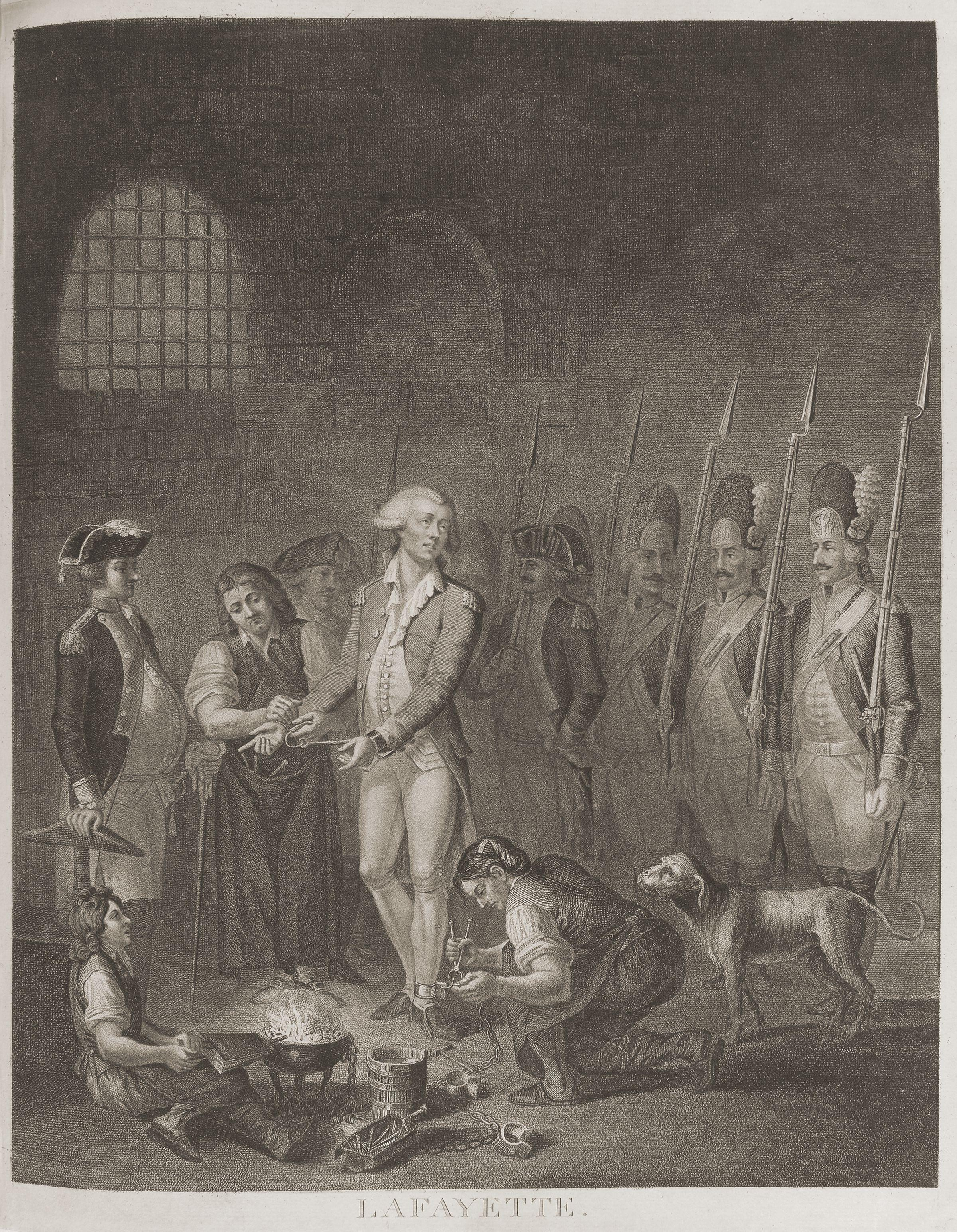
Lafayette, when captured, tried to use the American citizenship he had been granted to secure his release, and contacted William Short, United States minister in The Hague. Although Short and other U.S. envoys very much wanted to succor Lafayette for his services to their country, they knew that his status as a French officer took precedence over any claim to American citizenship. Washington, who was by then president, had instructed the envoys to avoid actions that entangled the country in European affairs, and the U.S. did not have diplomatic relations with either Prussia or Austria. They did send money for the use of Lafayette, and for his wife, Adrienne, whom the French had imprisoned (her grandparents, mother, and sister had been executed during the Reign of Terror). Secretary of State Jefferson found a loophole allowing Lafayette to be paid, with interest, for his services as a major general from 1777 to 1783. An act was rushed through Congress and signed by President Washington. These funds allowed both Lafayette's and his family's privileges during their captivity.
A more direct means of aiding the former general was an escape attempt sponsored by Alexander Hamilton's sister-in-law Angelica Schuyler Church and her husband John Barker Church, a British Member of Parliament who had served in the Continental Army. They hired as agent a young Hanoverian physician, Justus Erich Bollmann, who acquired an assistant, a South Carolinian medical student named Francis Kinloch Huger. This was the son of Benjamin Huger, whom Lafayette had stayed with upon his first arrival in America. With their help, Lafayette managed to escape from an escorted carriage drive in the countryside outside Olmütz, but he lost his way and was recaptured. Bollman and Huger were captured and received short sentences, after which they were released, becoming international celebrities for their attempt to free Lafayette. They journeyed to America where they met with Washington and briefed him on conditions at Olmütz.
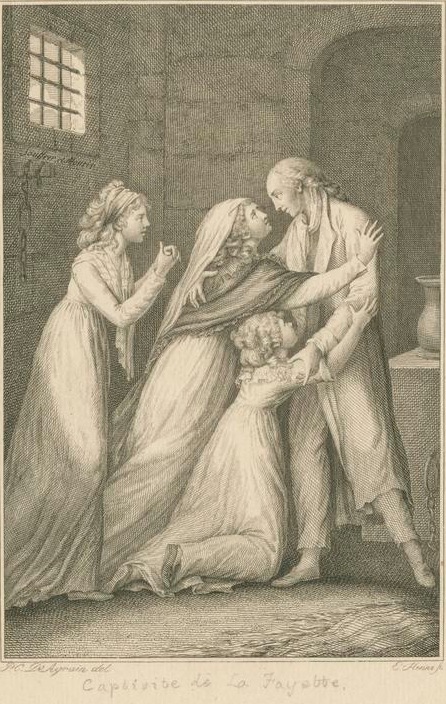
Once Adrienne was released from prison in France (January 22, 1795), she, with the help of U.S. Minister to France James Monroe, obtained passports for her and her daughters from Connecticut, which had granted the entire Lafayette family citizenship. Her son Georges Washington had been smuggled out of France and taken to the United States. Adrienne and her two daughters journeyed to Vienna for an audience with Emperor Francis, who granted permission for the three women to live with Lafayette in captivity. Lafayette, who had endured harsh solitary confinement since his escape attempt a year before, was astounded when soldiers opened his prison door to usher in his wife and daughters on 15 October 1795. The family spent the next two years in confinement together.
6.2. Release by Napoleon and Return to France
Through diplomacy, the press, and personal appeals, Lafayette's sympathizers on both sides of the Atlantic made their influence felt, most importantly on the post-Reign of Terror French government. A young, victorious general, Napoleon Bonaparte, negotiated the release of the state prisoners at Olmütz as a result of the Treaty of Campo Formio. Lafayette's captivity of over five years thus came to an end. The Lafayette family and their comrades in captivity left Olmütz under Austrian escort early on the morning of 19 September 1797, crossed the Bohemian-Saxon border north of Prague, and were officially turned over to the American consul in Hamburg on 4 October.
From Hamburg, Lafayette sent a note of thanks to General Bonaparte. The French government, the Directory, was unwilling to have Lafayette return unless he swore allegiance, which he was not willing to do, as he believed it had come to power by unconstitutional means. As revenge, it had his remaining properties (which had been confiscated and sold in 1793 and 1794) sold, leaving him a pauper, though he would later receive 450.00 K francs in compensation in 1826. The family, soon joined by Georges Washington, who had returned from America, recuperated on a property near Hamburg belonging to Adrienne's aunt. Due to conflict between the United States and France, Lafayette could not go to America as he had hoped, making him a man without a country.
Adrienne was able to go to Paris and attempted to secure her husband's repatriation, flattering Bonaparte, who had returned to France after more victories. After Bonaparte's coup d'état of 18 Brumaire (9 November 1799), Lafayette used the confusion caused by the change of regime to slip into France with a passport in the name of "Motier." Bonaparte expressed rage, but Adrienne was convinced he was simply posing, and proposed to him that Lafayette would pledge his support, then would retire from public life to a property she had reclaimed, La Grange. France's new ruler allowed Lafayette to remain, though originally without citizenship and subject to summary arrest if he engaged in politics, with the promise of eventual restoration of civil rights. Lafayette remained quietly at La Grange, and when Bonaparte held a memorial service in Paris for Washington, who had died in December 1799, Lafayette, though he had expected to be asked to deliver the eulogy, was not invited, nor was his name mentioned.
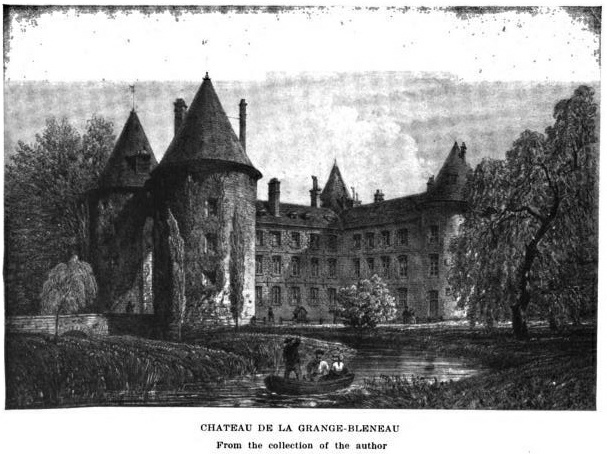
7. Activities During the Napoleonic Era and Bourbon Restoration
Lafayette's post-imprisonment life was marked by his consistent adherence to democratic principles, leading him to withdraw from politics during Napoleon's authoritarian rule and re-engage in parliamentary activism and liberal conspiracies during the Bourbon Restoration.
7.1. Political Retirement During the Napoleonic Era
Bonaparte restored Lafayette's citizenship on 1 March 1800, and he was able to recover some of his properties. After Marengo, the First Consul offered him the post of French minister to the United States, but Lafayette declined, saying he was too attached to America to act in relation to it as a foreign envoy. In 1802, he was part of the tiny minority that voted no in the referendum that made Bonaparte consul for life. A seat in the Senate and the Legion of Honour were repeatedly offered by Bonaparte, but Lafayette again declined - though stating that he would gladly have accepted the honors from a democratic government.
In 1804, Bonaparte was crowned the Emperor Napoleon after a plebiscite in which Lafayette did not participate. The retired general remained relatively quiet, although he made Bastille Day addresses. After the Louisiana Purchase, President Jefferson asked him if he would be interested in the governorship, but Lafayette declined, citing personal problems and his desire to work for liberty in France.
During a trip to Auvergne in 1807, Adrienne became ill, suffering from complications stemming from her time in prison, including symptoms of lead poisoning. She became delirious but recovered enough on Christmas Eve to gather the family around her bed and to say to Lafayette: "Je suis toute à vous" ("I am all yours"). She died the next day. In the years after her death, Lafayette mostly remained quietly at La Grange, as Napoleon's power in Europe waxed and then waned. Many influential people and members of the public visited him, especially Americans. He wrote many letters, especially to Jefferson, and exchanged gifts as he had once done with Washington.
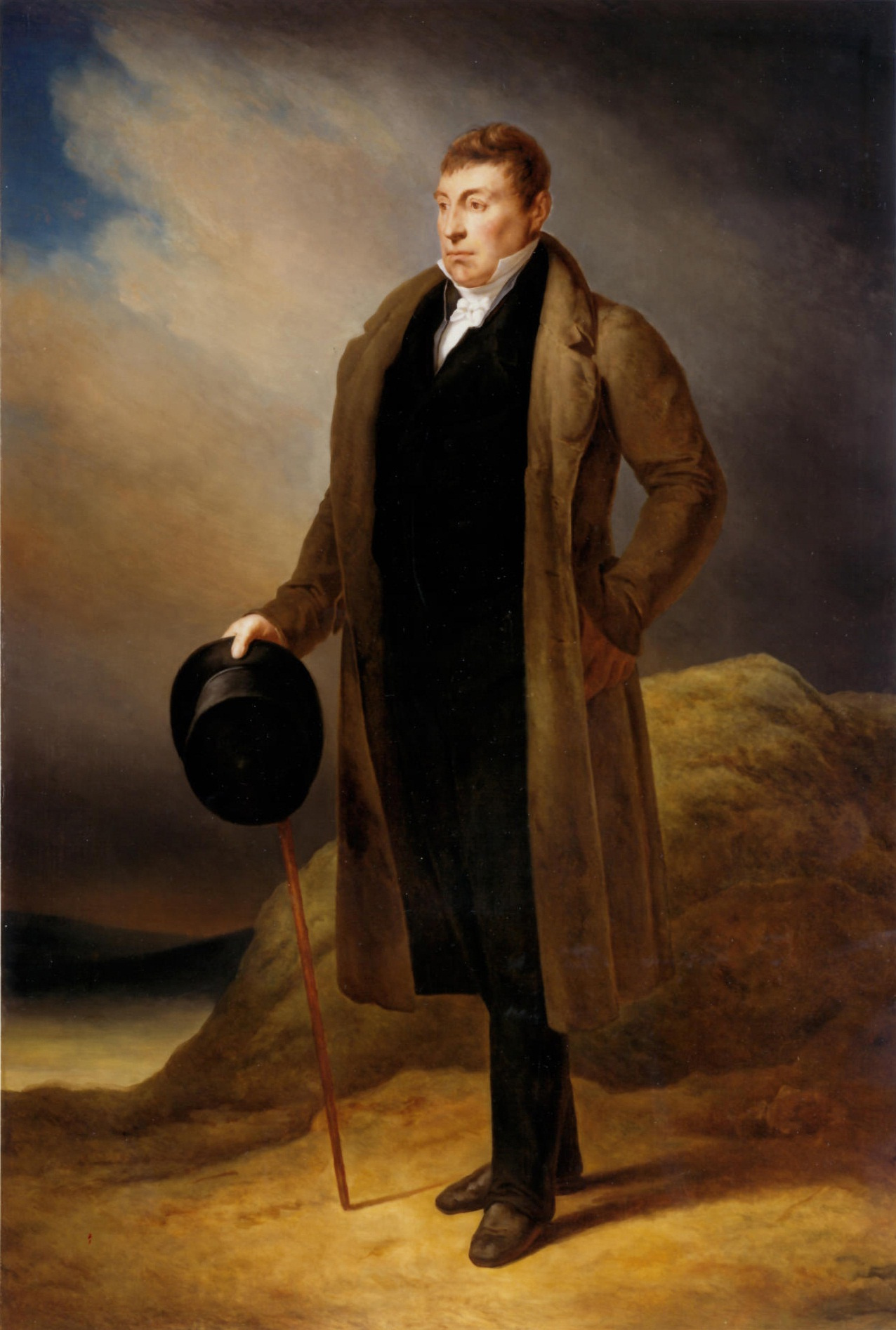
7.2. Parliamentary Activities During the Bourbon Restoration
In 1814, the coalition that opposed Napoleon invaded France and restored the monarchy; the comte de Provence (brother of the executed Louis XVI) took the throne as Louis XVIII. Lafayette was received by the new king, but the staunch republican opposed the new, highly restrictive franchise for the Chamber of Deputies that granted the vote to only 90,000 men in a nation of 25 million. Lafayette did not stand for election in 1814, remaining at La Grange.
There was discontent in France among demobilized soldiers and others. Napoleon had been exiled only as far as Elba, an island in the Tuscan archipelago; seeing an opportunity, he landed at Cannes on 1 March 1815 with a few hundred followers. Frenchmen flocked to his banner, and he took Paris later that month, causing Louis to flee to Ghent. Lafayette refused Napoleon's call to serve in the new government, but accepted election to the new Chamber of Representatives under the Charter of 1815. There, after Napoleon's defeat at the Battle of Waterloo, Lafayette called for his abdication. Responding to the emperor's brother Lucien Bonaparte, Lafayette argued:
"By what right do you dare accuse the nation of ... want of perseverance in the emperor's interest? The nation has followed him on the fields of Italy, across the sands of Egypt and the plains of Germany, across the frozen deserts of Russia ... The nation has followed him in fifty battles, in his defeats and in his victories, and in doing so we have to mourn the blood of three million Frenchmen."
On 22 June 1815, four days after Waterloo, Napoleon abdicated. Lafayette arranged for the former emperor's passage to America, but the British prevented this, and Napoleon ended his days on the island of Saint Helena. The Chamber of Representatives, before it dissolved, appointed Lafayette to a peace commission that was ignored by the victorious allies who occupied much of France, with the Prussians taking over La Grange as a headquarters. Once the Prussians left in late 1815, Lafayette returned to his house, a private citizen again.
Lafayette's homes, both in Paris and at La Grange, were open to any Americans who wished to meet the hero of their Revolution, and to many other people besides. Among those whom Irish novelist Sydney, Lady Morgan met at table during her month-long stay at La Grange in 1818 were the Dutch painter Ary Scheffer and the historian Augustin Thierry, who sat alongside American tourists. Others who visited included philosopher Jeremy Bentham, American scholar George Ticknor, and writer Fanny Wright.
During the first decade of the Bourbon Restoration, Lafayette lent his support to a number of conspiracies in France and other European countries, all of which came to nothing. He was involved in the various Charbonnier plots, and agreed to go to the city of Belfort, where there was a garrison of French troops, and assume a major role in the revolutionary government. Warned that the royal government had found out about the conspiracy, he turned back on the road to Belfort, avoiding overt involvement. More successfully, he supported the Greek Revolution beginning in 1821, and by letter attempted to persuade American officials to ally with the Greeks. Louis' government considered arresting both Lafayette and Georges Washington, who was also involved in the Greek efforts, but were wary of the political ramifications if they did. Lafayette remained a member of the restored Chamber of Deputies until 1823, when new plural voting rules helped defeat his bid for re-election. In the 1824 election, he was defeated by a conservative candidate.
8. The 1830 July Revolution and Final Years
Lafayette's life culminated in his pivotal role in the 1830 July Revolution, demonstrating his enduring commitment to liberal ideals, though his later years were marked by disillusionment with the new monarchy.
8.1. Key Role in the July Revolution
When Lafayette arrived in France, Louis XVIII had been dead about a year and Charles X was on the throne. As king, Charles intended to restore the absolute rule of the monarch, and his decrees had already prompted protest by the time Lafayette arrived. Lafayette was the most prominent of those who opposed the king. In the elections of 1827, the 70-year-old Lafayette was elected to the Chamber of Deputies again. Unhappy at the outcome, Charles dissolved the Chamber, and ordered a new election: Lafayette again won his seat.
Lafayette remained outspoken against Charles's restrictions on civil liberties and the newly introduced censorship of the press. He made fiery speeches in the Chamber, denouncing the new decrees and advocating American-style representative government. He hosted dinners at La Grange, for Americans, Frenchmen, and others; all came to hear his speeches on politics, freedom, rights, and liberty. He was popular enough that Charles felt he could not be safely arrested, but Charles's spies were thorough: one government agent noted "his [Lafayette's] seditious toasts ... in honor of American liberty."
On 25 July 1830, the king signed the Ordinances of Saint-Cloud, removing the franchise from the middle class and dissolving the Chamber of Deputies. The decrees were published the following day. On 27 July, Parisians erected barricades throughout the city, and riots erupted. In defiance, the Chamber continued to meet. When Lafayette, who was at La Grange, heard what was going on, he raced into the city, and was acclaimed as a leader of the revolution. When his fellow deputies were indecisive, Lafayette went to the barricades, and soon the royalist troops were routed. Fearful that the excesses of the 1789 revolution were about to be repeated, deputies made Lafayette head of a restored National Guard, and charged him with keeping order. The Chamber was willing to proclaim him as ruler, but he refused a grant of power he deemed unconstitutional. He also refused to deal with Charles, who abdicated on 2 August. Many young revolutionaries sought a republic, but Lafayette felt this would lead to civil war, and chose to offer the throne to the duc d'Orleans, Louis-Philippe, who had lived in America and had far more of a common touch than did Charles. Lafayette secured the agreement of Louis-Philippe, who accepted the throne, to various reforms. The general remained as commander of the National Guard. This did not last long - the brief concord at the king's accession soon faded, and the conservative majority in the Chamber voted to abolish Lafayette's National Guard post on 24 December 1830. Lafayette went back into retirement, expressing his willingness to do so.
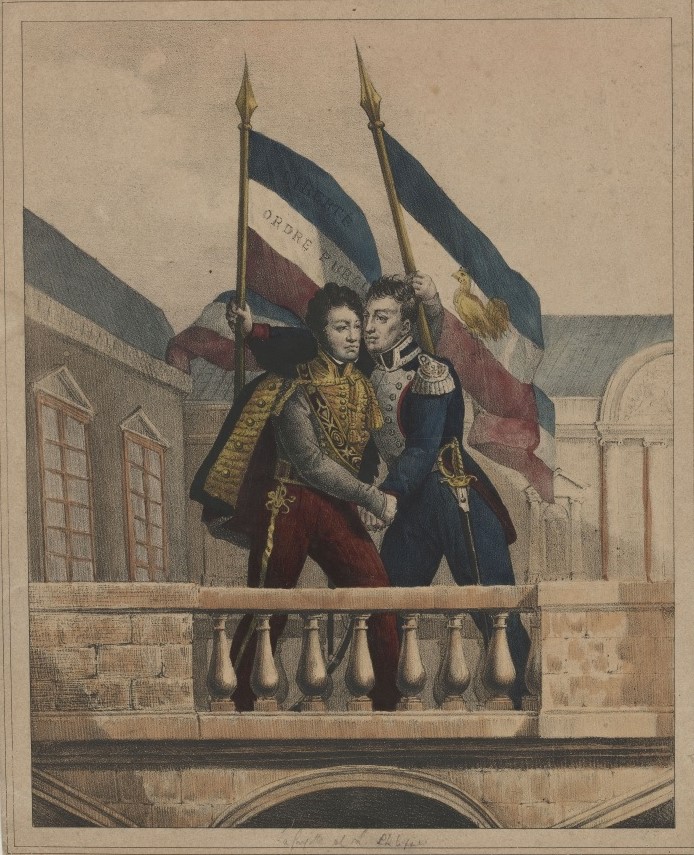
8.2. Conflict with Louis-Philippe and Final Retirement
Lafayette grew increasingly disillusioned with Louis-Phillippe, who backtracked on reforms and denied his promises to make them. The retired general angrily broke with his king, a breach which widened when the government used force to suppress a strike in Lyon. Lafayette used his seat in the Chamber to promote liberal proposals, and his neighbors elected him mayor of the village of La Grange and to the council of the département of Seine-et-Marne in 1831. The following year, he served as a pallbearer and spoke at the funeral of General Jean Maximilien Lamarque, another opponent of Louis-Phillippe. He pleaded for calm, but there were riots in the streets and a barricade was erected at the Place de la Bastille. The king forcefully crushed this June Rebellion, to Lafayette's outrage. He returned to La Grange until the Chamber met in November 1832, when he condemned Louis-Phillippe for introducing censorship, as Charles X had.
8.3. Final Illness and Death
Lafayette spoke publicly for the last time in the Chamber of Deputies on 3 January 1834. The next month, he collapsed at a funeral from pneumonia. He recovered, but the following May was wet, and he became bedridden after being caught in a thunderstorm. He died at age 76 on 20 May 1834 at 6 rue d'Anjou-Saint-Honoré in Paris (now 8 rue d'Anjou in the 8th arrondissement of Paris). He was buried next to his wife at the Picpus Cemetery under soil from Bunker Hill, which his son Georges Washington sprinkled upon him. King Louis-Philippe ordered a military funeral in order to keep the public from attending, and crowds formed to protest their exclusion.
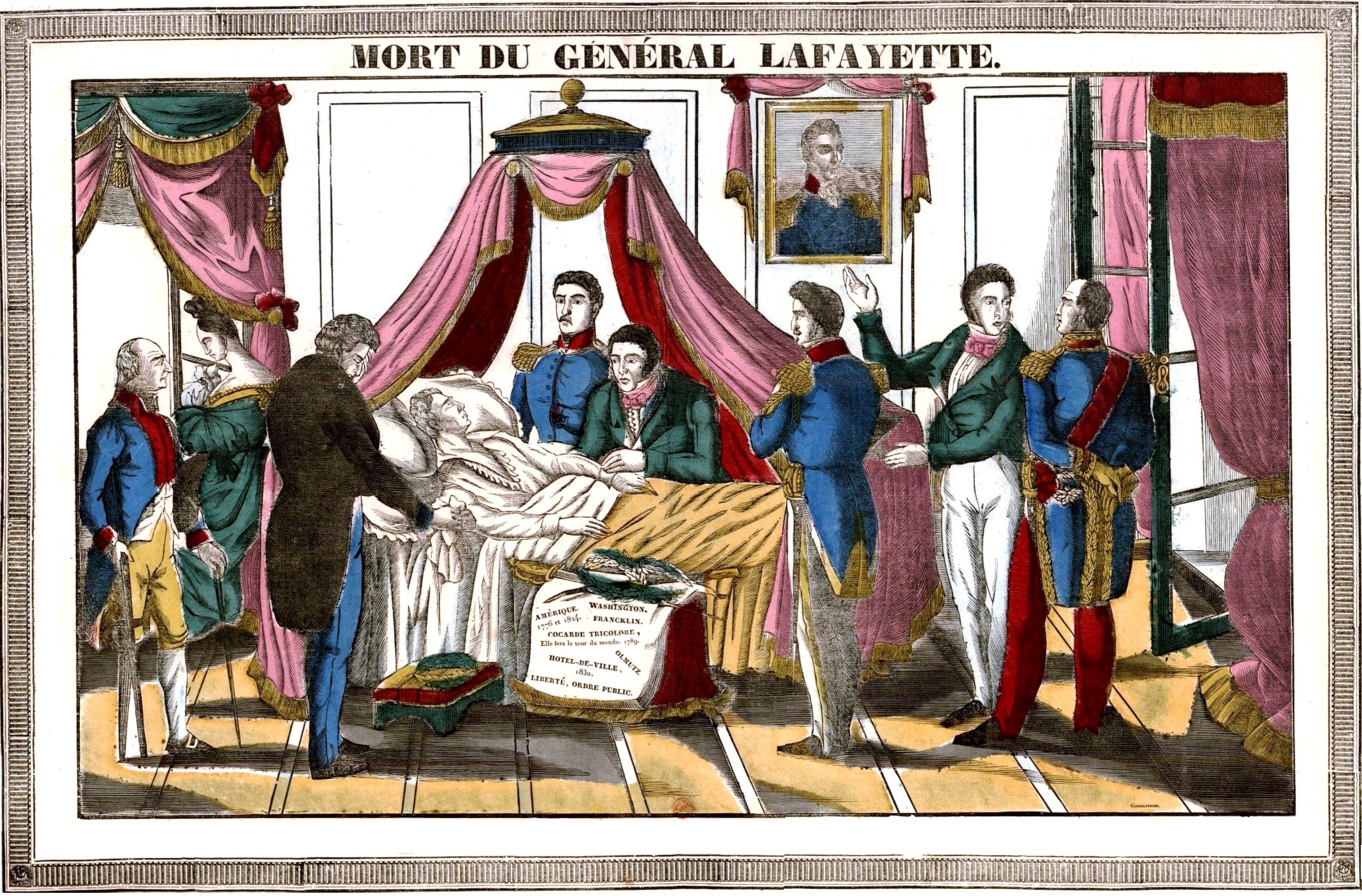
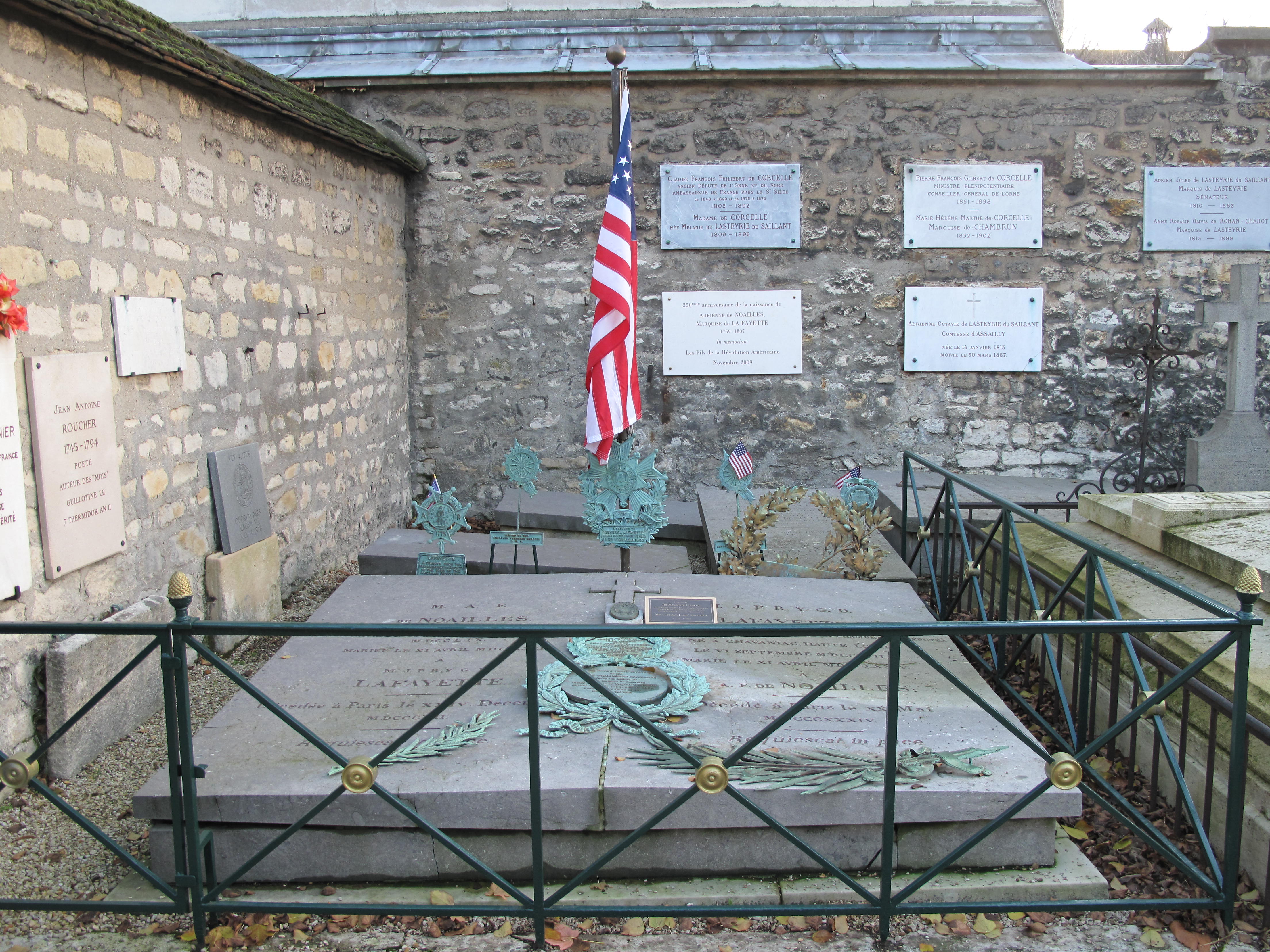
In the United States, President Jackson ordered that Lafayette receive the same memorial honors that had been bestowed on Washington at his death in December 1799. Both Houses of Congress were draped in black bunting for 30 days, and members wore mourning badges. Congress urged Americans to follow similar mourning practices. Later that year, former president John Quincy Adams gave a eulogy of Lafayette that lasted three hours, calling him "high on the list of the pure and disinterested benefactors of mankind."
9. Philosophy and Beliefs
Lafayette's political and social ideologies were deeply rooted in the Enlightenment, championing a balanced approach to governance and unwavering commitment to universal human rights, particularly the abolition of slavery.
9.1. Political Ideology and Constitutional Monarchy
Lafayette was a firm believer in a constitutional monarchy. He believed that traditional and revolutionary ideals could be melded together by having a democratic National Assembly work with a monarch, as France always had. His close relationships to American Founding Fathers such as George Washington and Thomas Jefferson gave him an opportunity to witness the implementation of a democratic system. His views on potential government structures for France were directly influenced by the American form of government, which was in turn influenced by the British form of government. For example, Lafayette believed in a bicameral legislature, as the United States had. The Jacobins, however, detested the idea of a monarchy in France, which led the National Assembly to vote against it. This idea contributed to his fall from favor, especially when Maximilien Robespierre took power, as it made him appear to have royalist tendencies in the eyes of the radical factions.
9.2. Abolitionism
Lafayette was the author of the Declaration of the Rights of Man and of the Citizen in 1789 and a staunch opponent of slavery. His work never specifically mentioned slavery, but he made his position clear on the controversial topic through letters addressed to friends and colleagues such as Washington and Jefferson. He proposed that enslaved people not be owned but rather work as free tenants on the land of plantation owners, and he bought three slave plantations in Cayenne in 1785 and 1786 to put his ideas into practice, ordering that none of the 70 enslaved people on the plantations be bought or sold. He spent his lifetime as an abolitionist, proposing that enslaved people be emancipated slowly as he recognized the crucial role that slavery played in many economies. Lafayette hoped that his ideas would be adopted by Washington to free enslaved people in the United States and spread from there. Washington eventually began implementing those practices on his own plantation at Mount Vernon but continued to own enslaved people until his death. Lafayette played a significant role in the abolition of slavery in France in 1794.
10. Legacy and Historical Assessment
Lafayette's enduring legacy is complex, marked by profound admiration in the United States as a hero of liberty and a more nuanced, often critical, assessment in France regarding his role in the Revolution.
10.1. Assessment in the United States
Throughout his life, Lafayette was an exponent of the ideals of the Age of Enlightenment, especially on human rights and civic nationalism, and his views were taken very seriously by intellectuals and others on both sides of the Atlantic. His image in the United States was derived from his "disinterestedness" in fighting without pay for the freedom of a country that was not his own. Samuel Adams praised him for "foregoing the pleasures of Enjoyment of domestick Life and exposing himself to the Hardship and Dangers" of war when he fought "in the glorious cause of freedom." This view was shared by many contemporaries, establishing an image of Lafayette seeking to advance the freedom of all mankind rather than the interests of just one nation. During the French Revolution, Americans viewed him as an advocate for American ideals, seeking to transport them from New World to Old. This was reinforced by his position as surrogate son and disciple of George Washington, who was deemed the Father of His Country and the embodiment of American ideals. Novelist James Fenimore Cooper befriended Lafayette during his time in Paris in the 1820s. He admired his patrician liberalism and eulogized him as a man who "dedicated youth, person, and fortune to the principles of liberty."
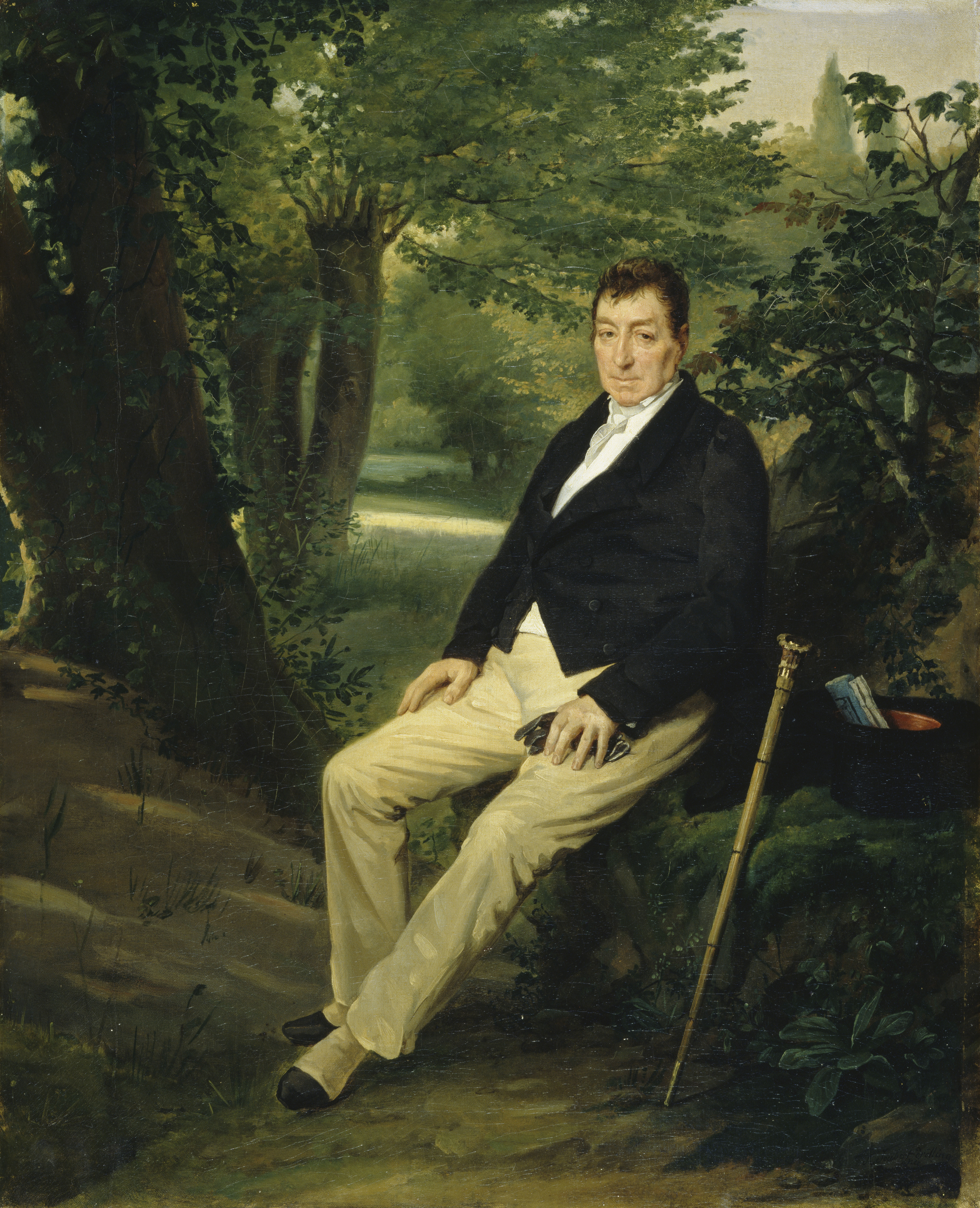
Lafayette became an American icon in part because he was not associated with any particular region of the country; he was of foreign birth, did not live in America, and had fought in New England, the mid-Atlantic states, and the South, making him a unifying figure. His role in the French Revolution enhanced this popularity, as Americans saw him steering a middle course. Americans were naturally sympathetic to a republican cause, but also remembered Louis XVI as an early friend of the United States. When Lafayette fell from power in 1792, Americans tended to blame factionalism for the ouster of a man who was above such things in their eyes.
In 1824, Lafayette returned to the United States at a time when Americans were questioning the success of the republic in view of the disastrous economic Panic of 1819 and the sectional conflict resulting in the Missouri Compromise. Lafayette's hosts considered him a judge of how successful independence had become. According to cultural historian Lloyd Kramer, Lafayette "provided foreign confirmations of the self-image that shaped America's national identity in the early nineteenth century and that has remained a dominant theme in the national ideology ever since: the belief that America's Founding Fathers, institutions, and freedom created the most democratic, egalitarian, and prosperous society in the world."
Historian Gilbert Chinard wrote in 1936: "Lafayette became a legendary figure and a symbol so early in his life, and successive generations have so willingly accepted the myth, that any attempt to deprive the young hero of his republican halo will probably be considered as little short of iconoclastic and sacrilegious." That legend has been used politically; the name and image of Lafayette were repeatedly invoked in 1917 to gain popular support for America's entry into World War I, culminating with Charles E. Stanton's famous statement "Lafayette, we are here." This occurred at some cost to Lafayette's image in America; veterans returned from the front singing "We've paid our debt to Lafayette, who the hell do we owe now?" According to Anne C. Loveland, "Lafayette no longer served as a national hero-symbol" by the end of the war. In 2002, however, Congress voted to grant him honorary citizenship.
10.2. Assessment in France
Lafayette's reputation in France is more problematic. Thomas Gaines notes that the response to Lafayette's death was far more muted in France than in America, and suggested that this may have been because Lafayette was the last surviving hero of America's only revolution, whereas the changes in the French government had been far more chaotic. Lafayette's roles created a more nuanced picture of him in French historiography, especially in the French Revolution. Nineteenth-century historian Jules Michelet describes him as a "mediocre idol," lifted by the mob far beyond what his talents deserved. Jean Tulard, Jean-François Fayard, and Alfred Fierro note Napoleon's deathbed comment about Lafayette in their Histoire et dictionnaire de la Révolution française; he stated that "the king would still be sitting on his throne" if Napoleon had Lafayette's place during the French Revolution. They deemed Lafayette "an empty-headed political dwarf" and "one of the people most responsible for the destruction of the French monarchy." Gaines disagreed and noted that liberal and Marxist historians have also dissented from that view. Lloyd Kramer related 57% of the French deemed Lafayette the figure from the Revolution whom they most admired, in a survey taken just before the Revolution's bicentennial in 1989. Lafayette "clearly had more French supporters in the early 1990s than he could muster in the early 1790s."
Marc Leepson concluded his study of Lafayette's life:
"The Marquis de Lafayette was far from perfect. He was sometimes vain, naive, immature, and egocentric. But he consistently stuck to his ideals, even when doing so endangered his life and fortune. Those ideals proved to be the founding principles of two of the world's most enduring nations, the United States and France. That is a legacy that few military leaders, politicians, or statesmen can match."
10.3. Overall Contributions and Impact
Lafayette's contributions and impact are most often evaluated through his dedication to principles of liberty, democracy, and human rights across two continents. His unwavering commitment to these values, even at personal cost, cemented his image as a champion of universal freedom. In America, he is remembered as a selfless hero who fought for a foreign nation's independence, a symbol of Franco-American friendship, and a unifying figure in a nascent nation. His abolitionist efforts, though incomplete, reflected his progressive stance on human rights. In France, his legacy is more intricate, reflecting the complex and often violent turns of the French Revolution. While some historians criticize his moderation or perceived ineffectiveness amidst radicalization, others highlight his consistent advocacy for constitutionalism and human dignity. Despite the differing national narratives, Lafayette remains recognized globally as "The Hero of the Two Worlds" (Le Héros des Deux MondesFrench), embodying the transatlantic exchange of revolutionary ideals that shaped modern democratic states. His life serves as a testament to the enduring power of principles over shifting political tides.
11. Tributes and Memorials
Lafayette's contributions are commemorated through numerous monuments, places, and events in both France and the United States, reflecting his lasting impact as the "Hero of Two Worlds." He is one of only six people to be granted honorary citizenship of the United States, and the only one to receive it twice (in 1824 and 2002) and while still alive.
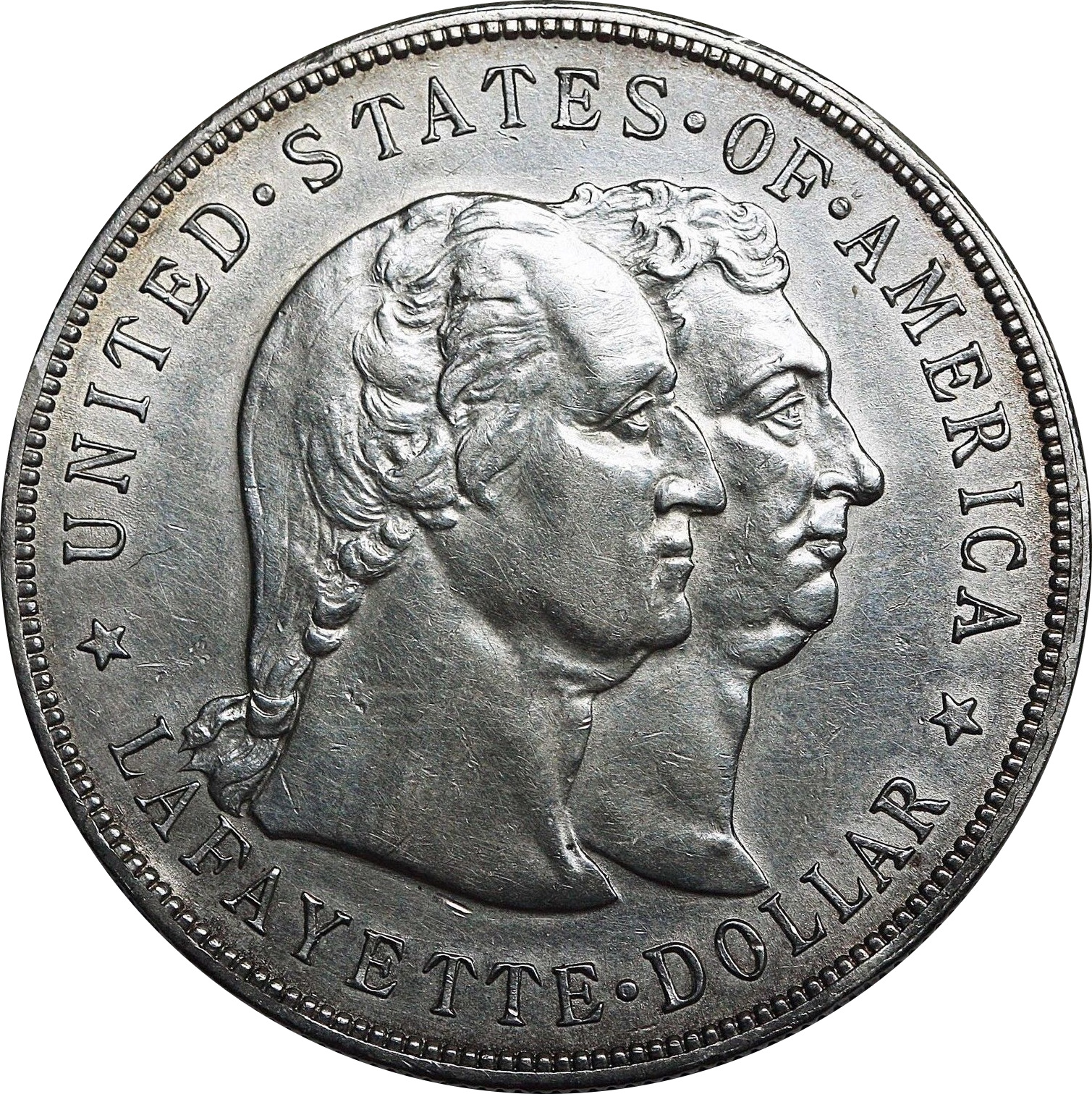
- Geographic Names**: Countless cities, towns, and counties in the United States bear his name, such as Fayetteville, North Carolina, the first city named in his honor. Other variations like "Fayette" or "Fayetteville" are also common.
- Monuments and Statues**:
- In the US, monuments, statues, and various places are dedicated to him. For instance, Lafayette Square in Washington, D.C., north of the White House, is named in his honor.
- A statue honoring Lafayette, created by Auguste Bartholdi (sculptor of the Statue of Liberty), was unveiled in 1917 in New York City and is now located in Union Square Park.
- A monument to Lafayette is in Baltimore, Maryland.
- Educational Institutions**: Lafayette College, founded in Easton, Pennsylvania, in 1826, is named after him.
- Military Honors**: The USS Brandywine was renamed from the Susquehanna in honor of the battle where Lafayette was wounded. In 1958, Colonel Hamilton Fish III, an American officer from World War I, founded the Order of Lafayette, which awards medals to American officers who fought in France.
- French Commemorations**:
- In France, a street named after Lafayette in Paris lent its name to the famous Galeries Lafayette department store.
- The frigate Hermione, which brought Lafayette to America in 1780, has been meticulously reconstructed in Rochefort, Charente-Maritime.
- Philatelic Tributes**:
175th anniversary of Lafayette's arrival in America in 1777, 1952 issue. 
200th anniversary of the birth of Lafayette, 1957 issue. 200th anniversary of Lafayette's arrival, 1977 issue as part of the Bicentennial Series.
His impact also extends to debates over his place in French national memory, with discussions, such as in 2007, about whether his remains should be interred in the Panthéon, highlighting the ongoing complexity of his legacy in France.
